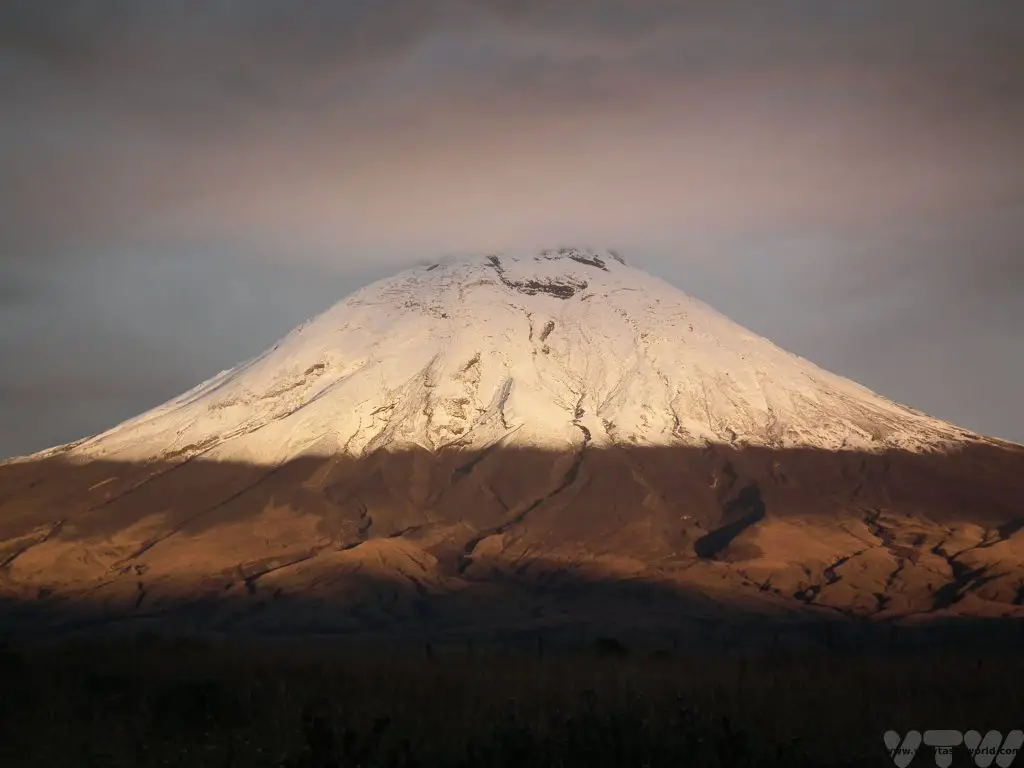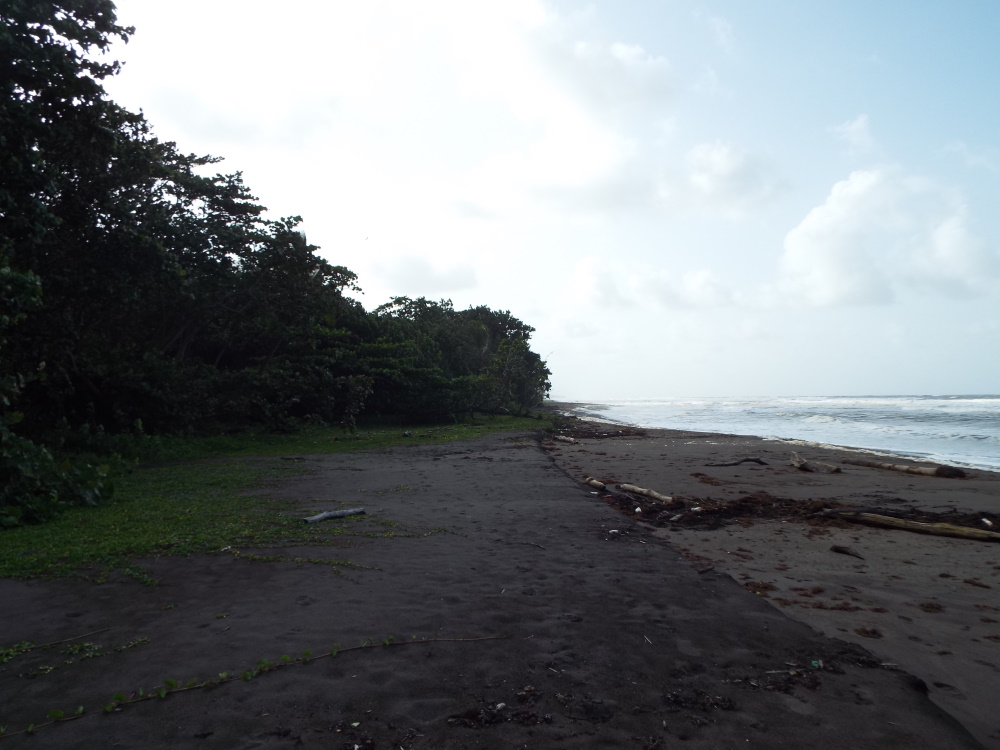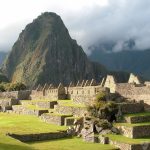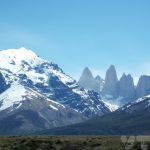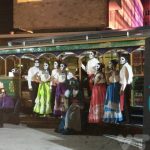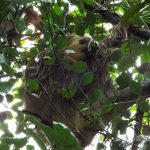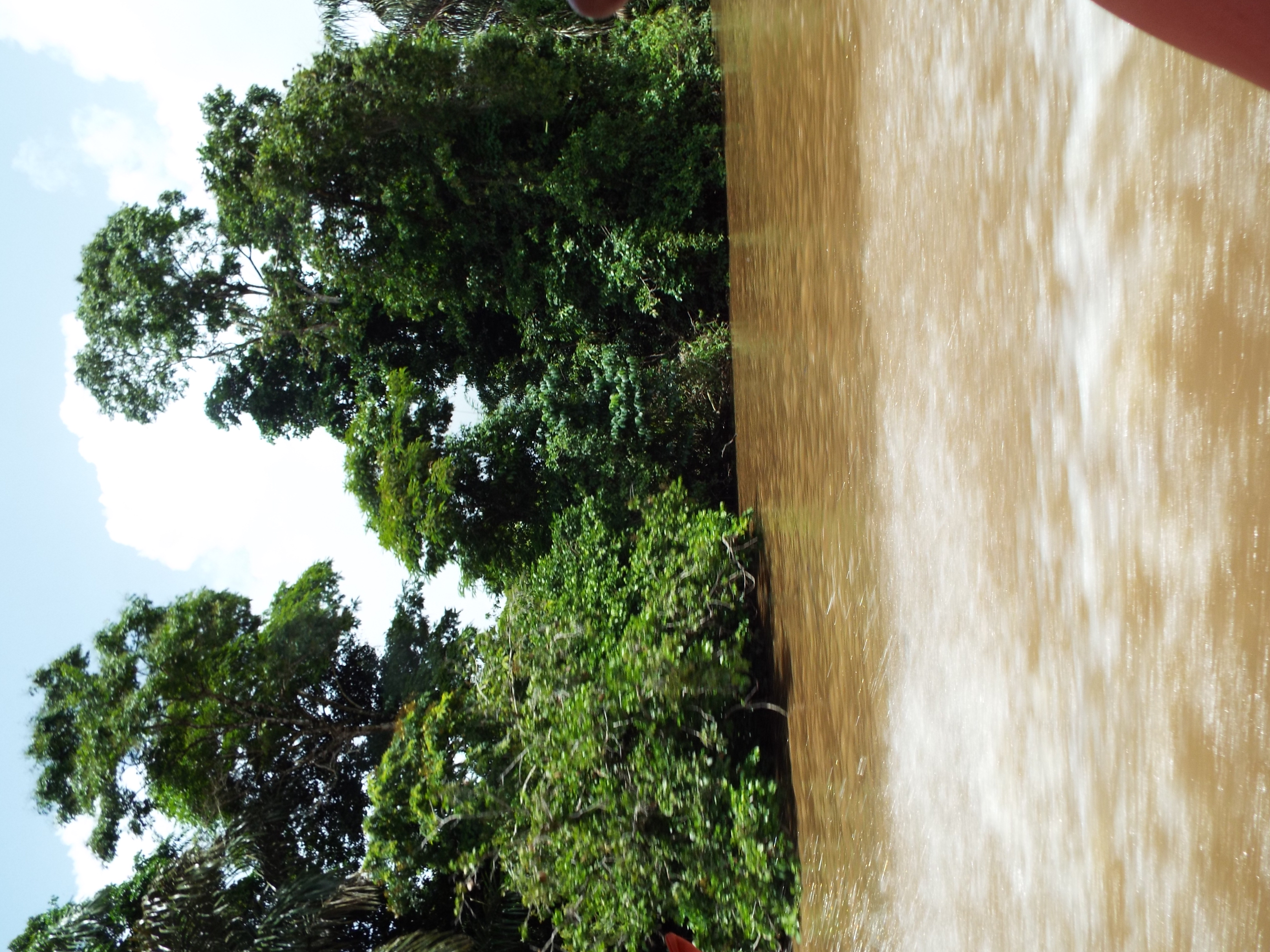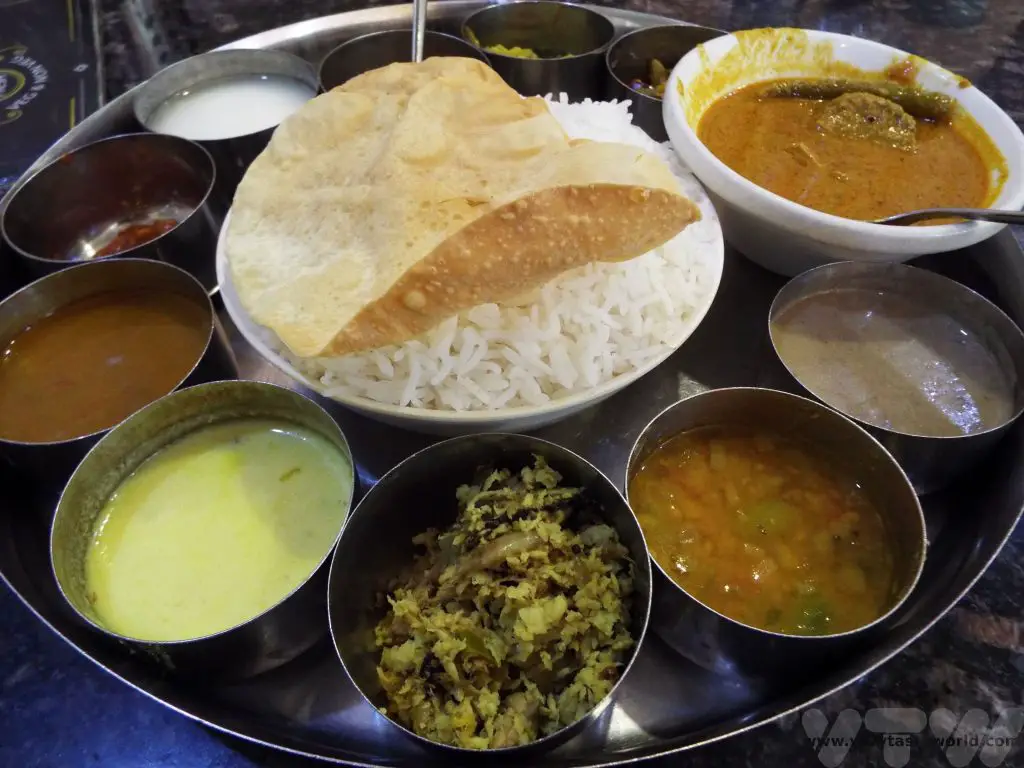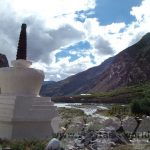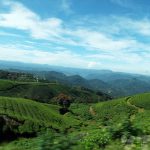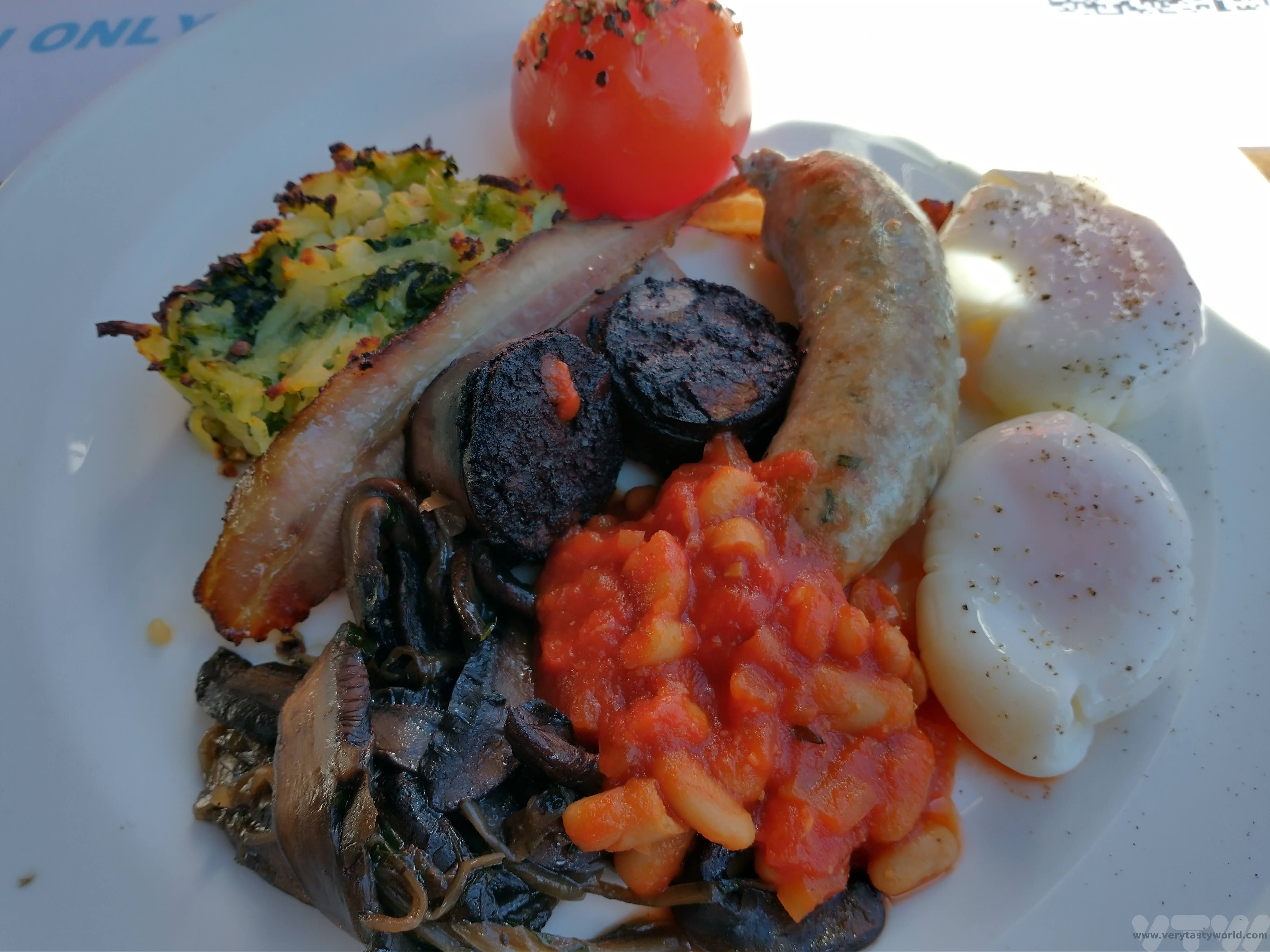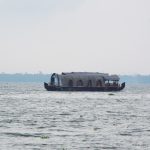RECIPE: How to Make Costa Rica’s Gallo Pinto
Gallo pinto is Costa Rica’s national dish. It’s so popular it can be eaten for breakfast, lunch and dinner. It comprises rice and beans cooked together and served with a variety of accompaniments – such as sausage, vegetables and eggs.
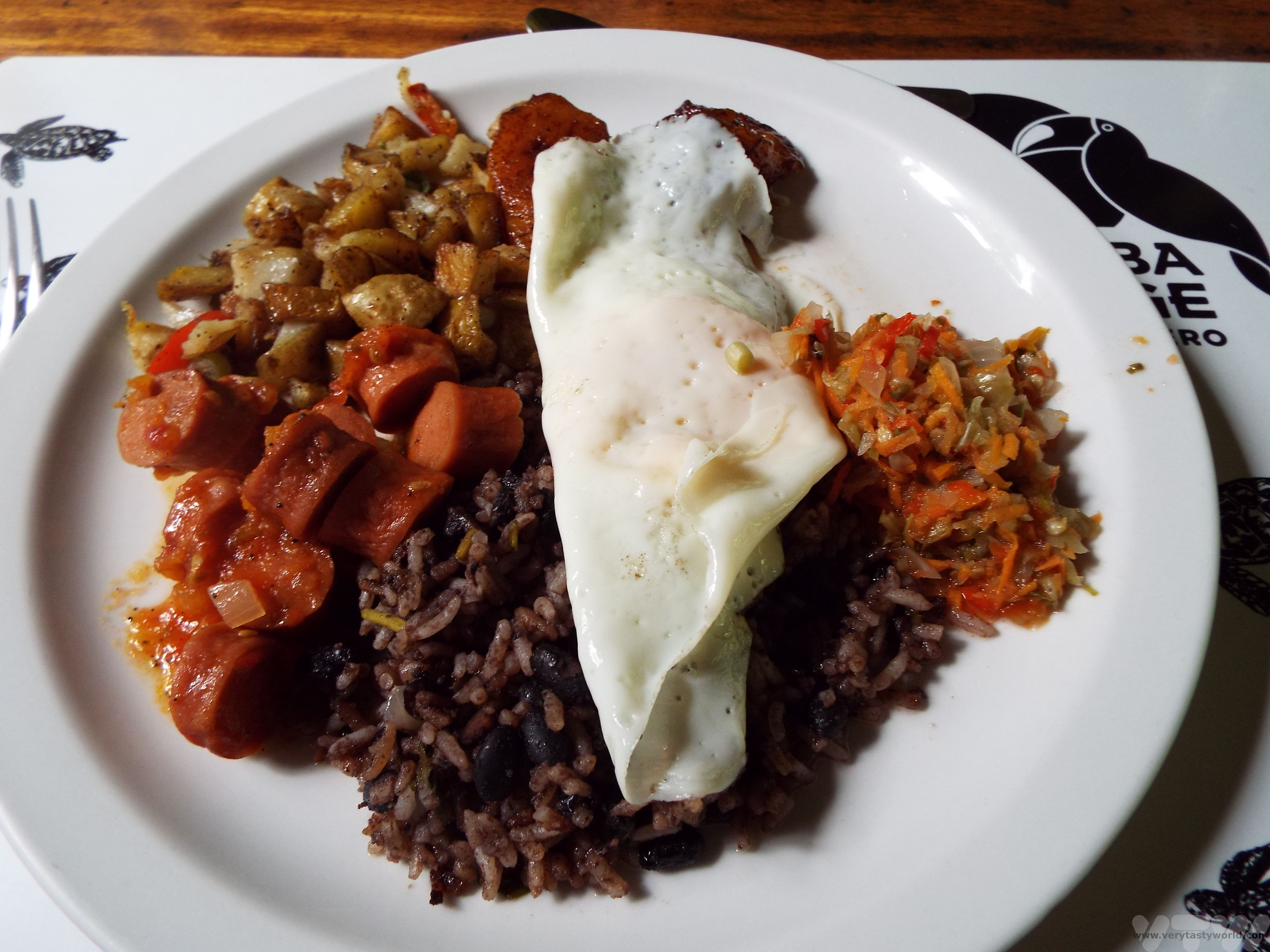
Gallo pinto can be translated as “spotted rooster” and refers to the black beans dotted through the white rice, the colours of which resemble a speckled chicken. Costa Rican food is considered to be highly nutritious and gallo pinto is no exception, but importantly, it’s also hearty, filling and delicious.
The type of rice used is traditionally white long grain. Brown rice or short grain rice is okay to use if that’s what you have. Gallo pinto is great if you cooked too much rice for dinner the night before – it’s an ideal leftovers meal.
The sauce used in this dish is called Lizano. If you ask for salsa at a restaurant in Costa Rica they will bring Lizano. It is used to accompany many dishes and we managed to bring back a couple of bottles from our trip. It is a tangy, spicy (but not searingly hot) sauce that has a lovely piquancy. It’s available in the UK but often at a massively inflated price – we’ve seen it available at an eye-wateringly expensive £30 for two bottles! No, we didn’t buy it. Instead we’ve worked out a recipe using easily available sauces/spices that replicates the flavour pretty well.
Gallo Pinto Recipe (Serves 4)
Ingredients
2 cups long grain white rice (our cups are around 150 ml)
1 tin of black beans (240g)
2 Tbs Lizano sauce (if you can’t get this you need 1 Tbs brown sauce, 2 tsp Worcestershire sauce, 1/2 tsp cayenne pepper, 1 tsp celery salt)
Clove or two of garlic (depending on how garlicky you feel), finely sliced or crushed
2 tsp cumin
1 egg per person
Lots of fresh coriander
Side Dish/Accompaniment Ingredients
Chopped vegetables – bell peppers, tomatoes, onion
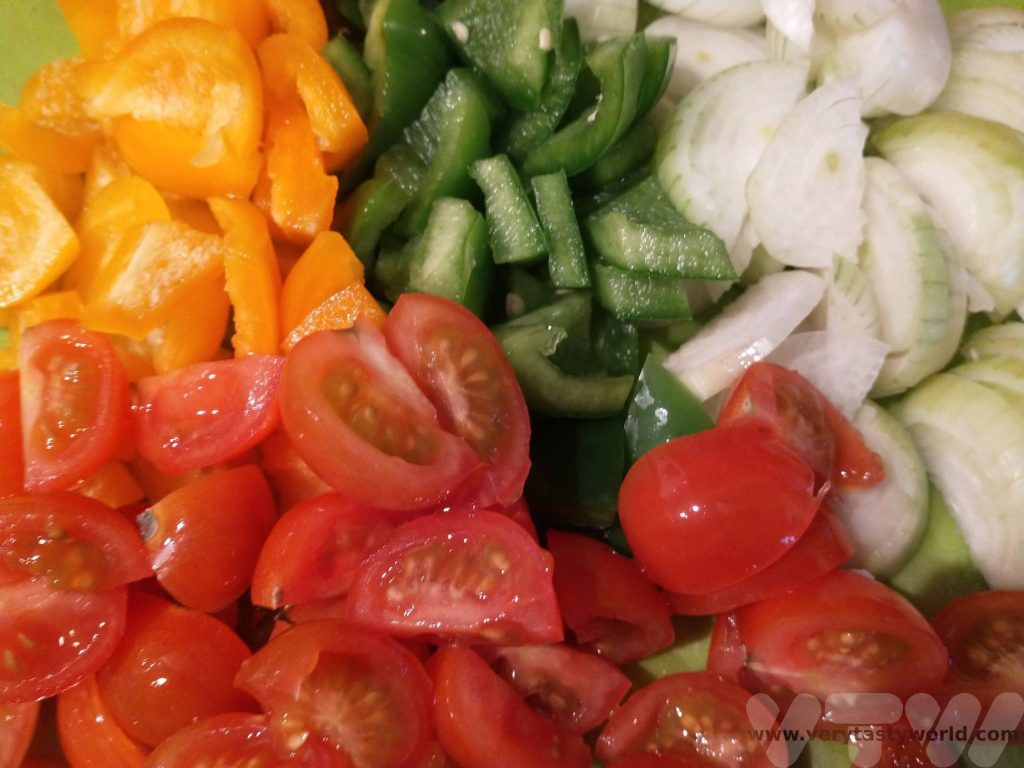
Method
Cook the rice. We use a ratio of 2 cups of water to 1 cup of rice. Our cups are around 150ml in size. Gallo pinto uses long grain rice.
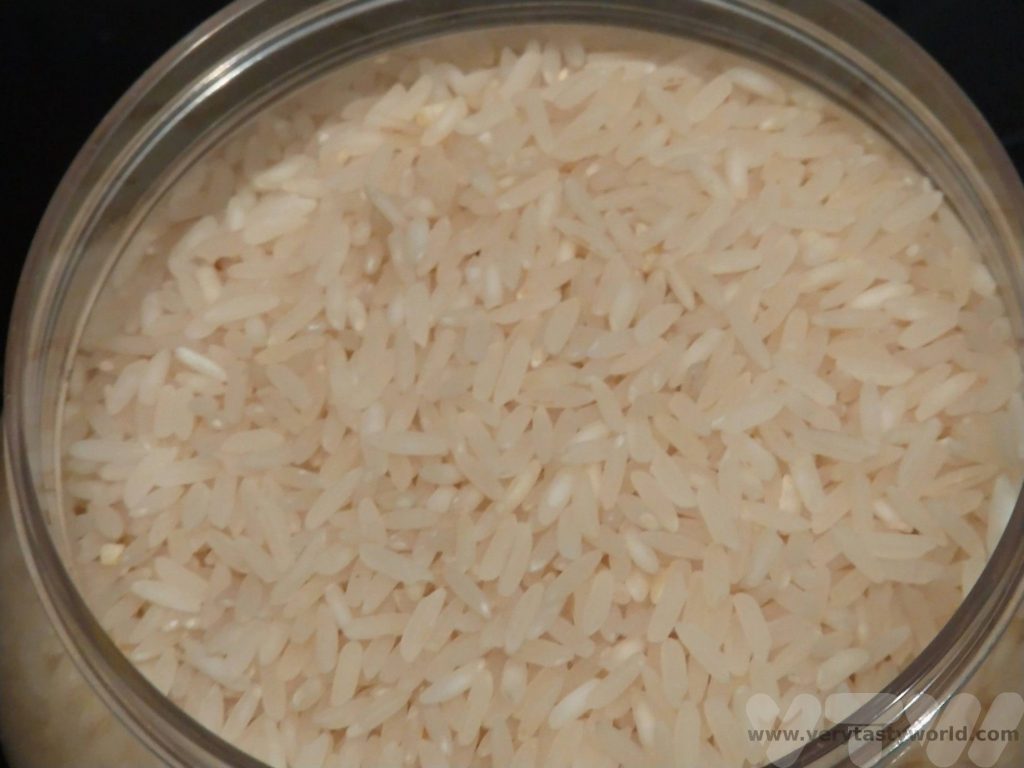
We use a rice cooker which is absolutely brilliant for cooking rice (as well as other things) as we can just bung the rice and water in and set it off. If you don’t have a rice cooker a saucepan is fine – use the same ratio of rice to water. When the rice has absorbed all the water it should be done. It’s absolutely fine to cook the rice well in advance and let it cool, in fact, it’s probably better not to put hot rice into the gallo pinto. Sometimes if we’re having a meal with rice the day before, we’ll make extra rice and let it cool down so that we can have gallo pinto the next day.
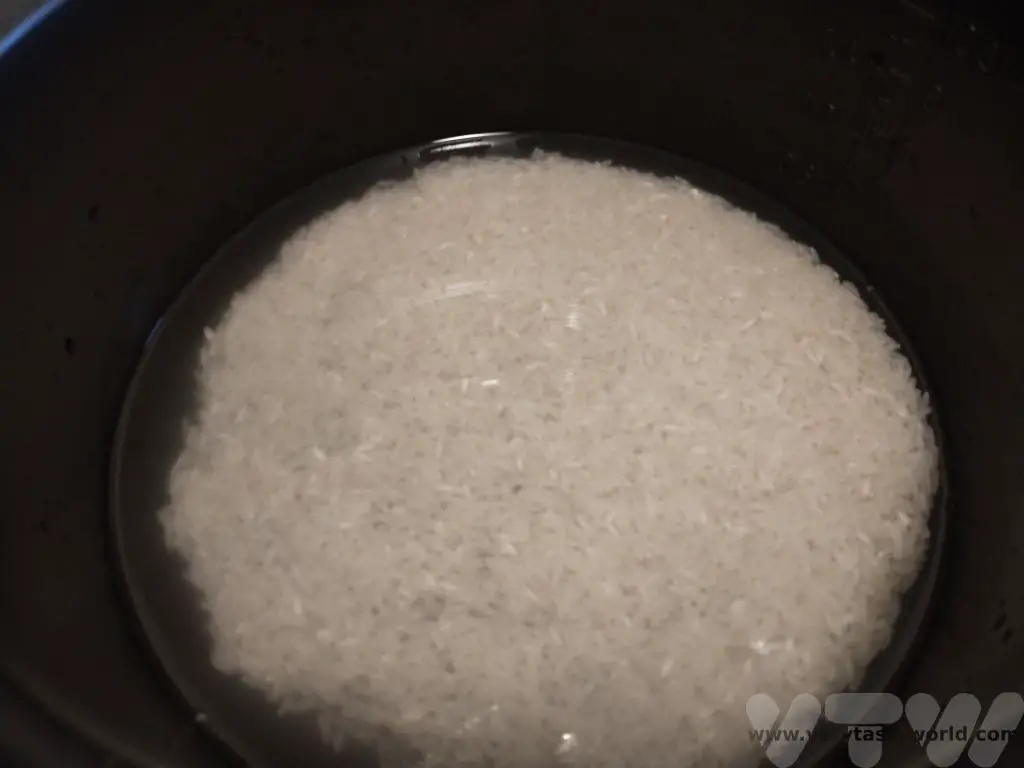
When ready to make the gallo pinto, gently fry the garlic in oil and add the cumin. Then add the rice and stir through.
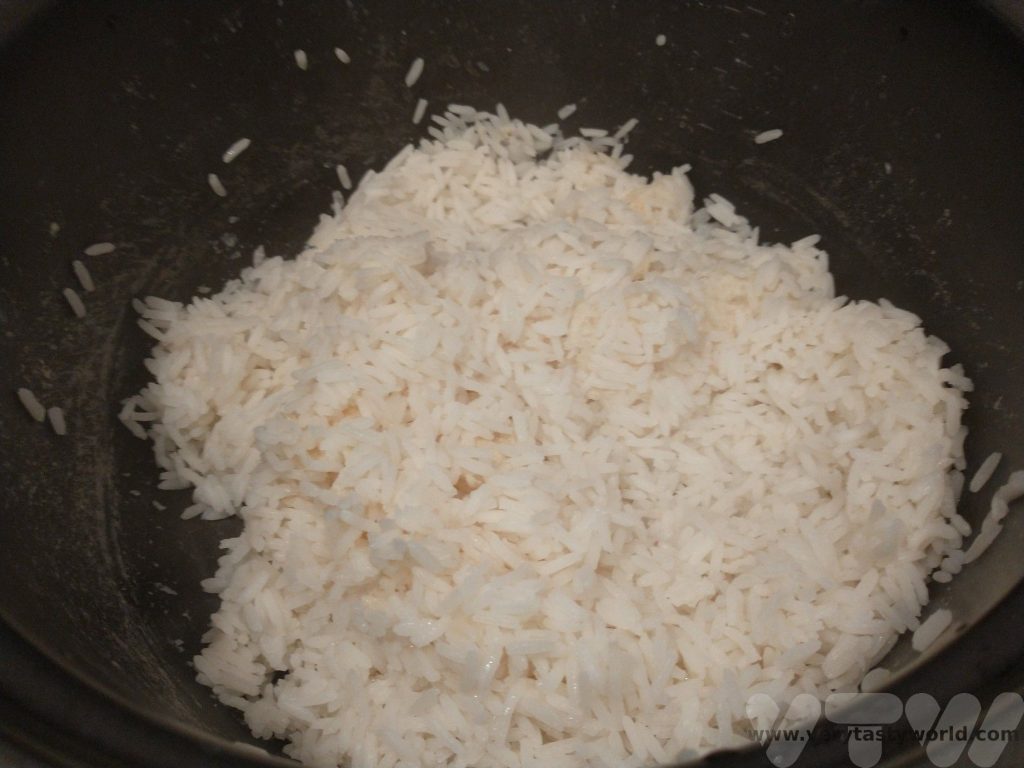
Open the tin of black beans and add the entire contents – including the water.
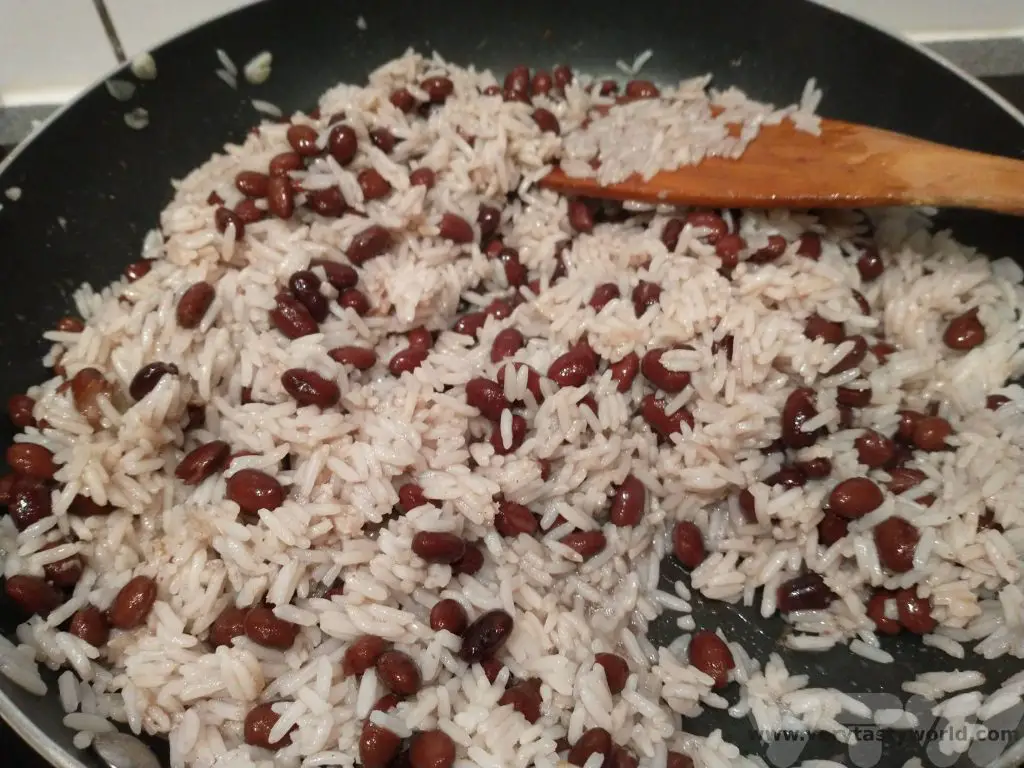
Add 2 Tbs of Lizano sauce.
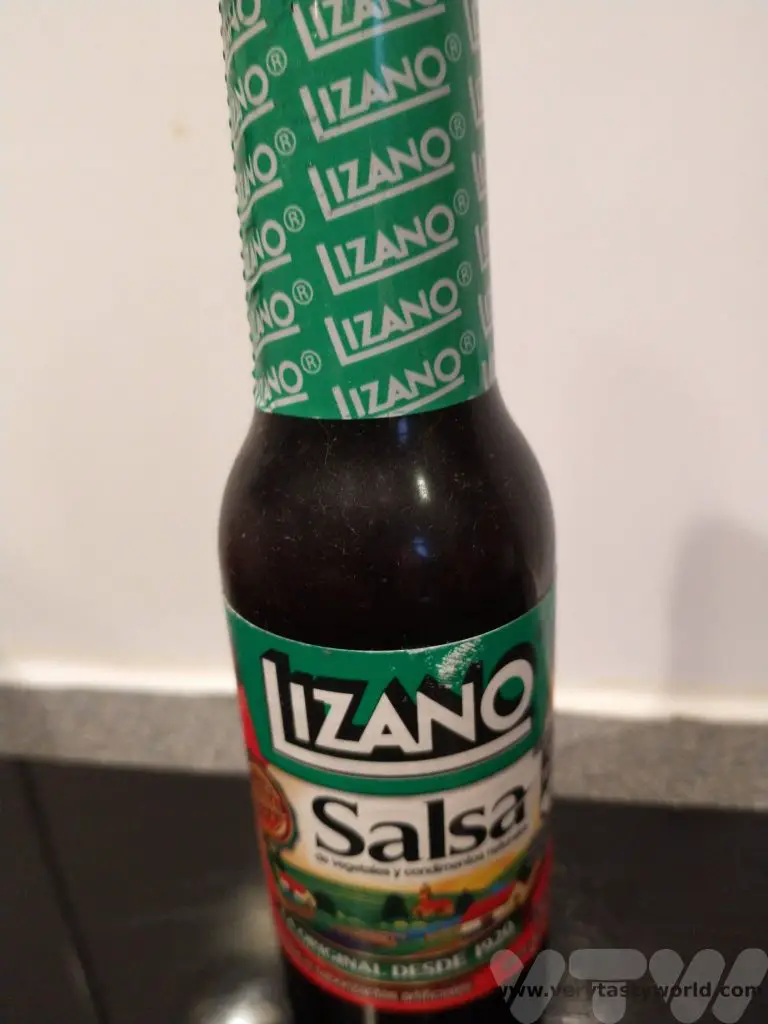
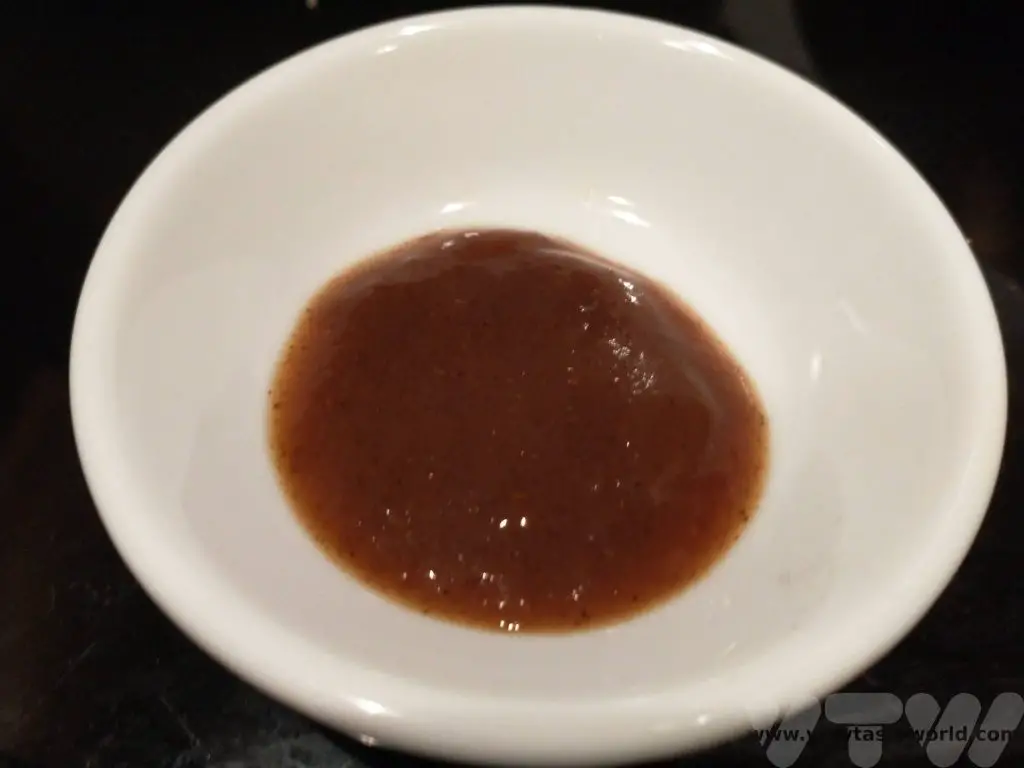
If you can’t get Lizano you can make a reasonable approximation by mixing brown sauce and Worcestershire sauce with spices: 1 Tbs brown sauce, 2 tsp Worcestershire sauce, 1/2 tsp cayenne pepper, 1 tsp celery salt.
Mix it all together gently.
Let the gallo pinto keep warm on a low heat while you fry an egg for each person.
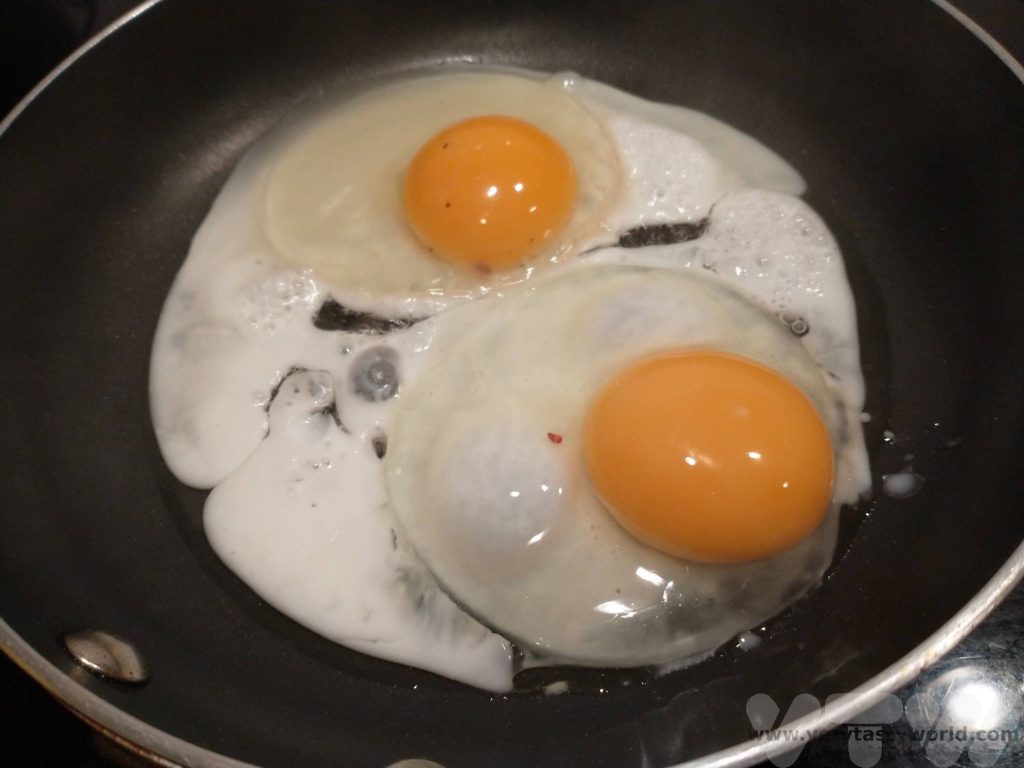
Garnish with chopped coriander.
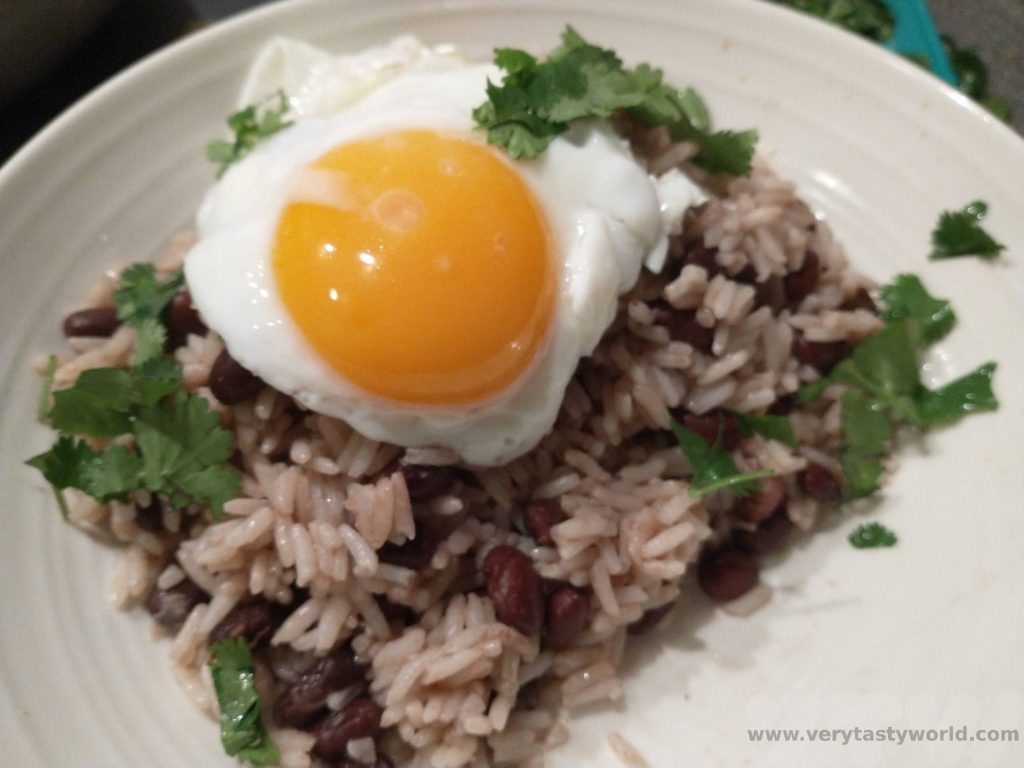
For a more complete meal, stir fry some vegetables and serve alongside the gallo pinto.
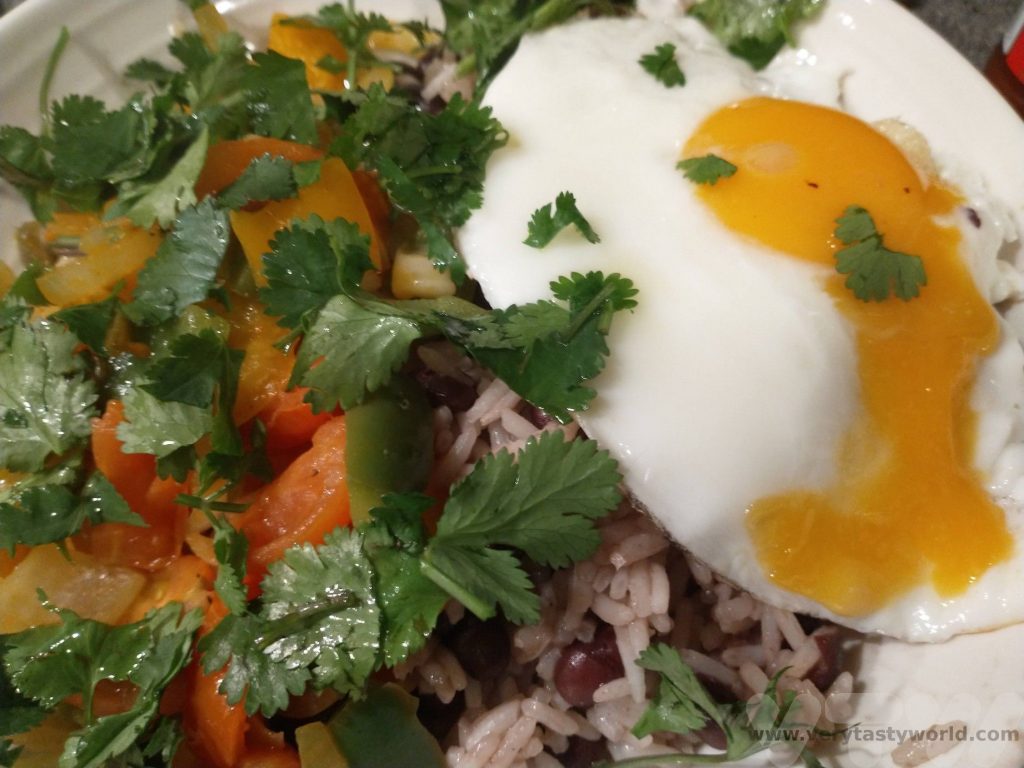
Alternative – at the garlic frying step, add chopped vegetables such as onion or bell pepper and stir into the gallo pinto itself.
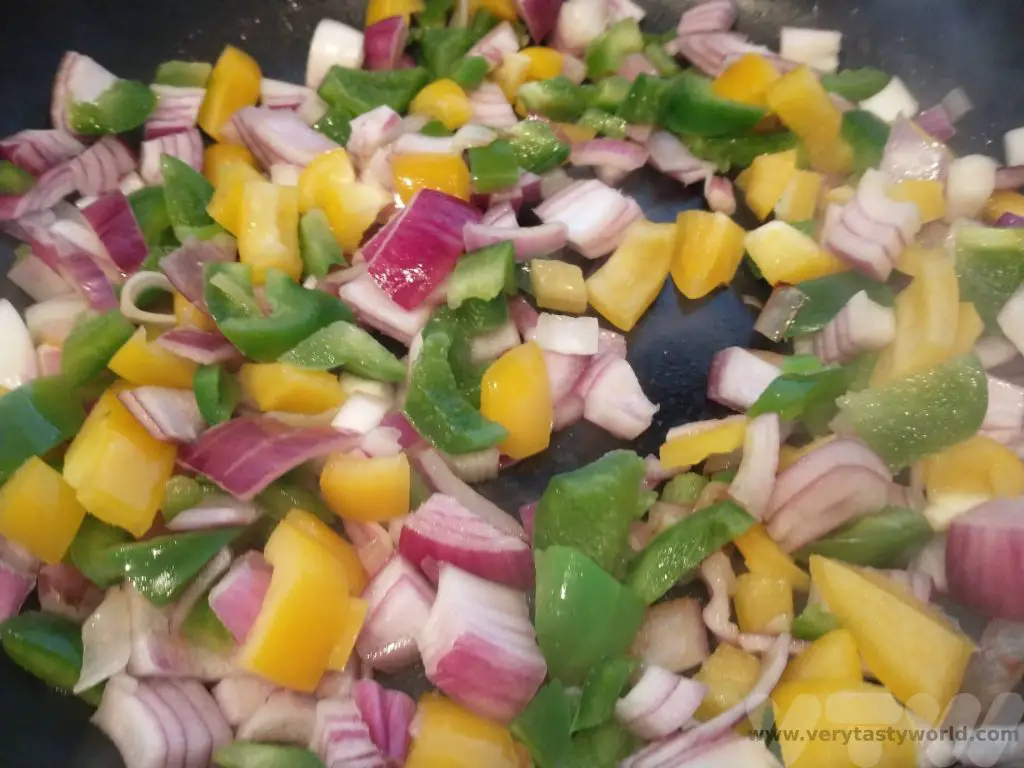
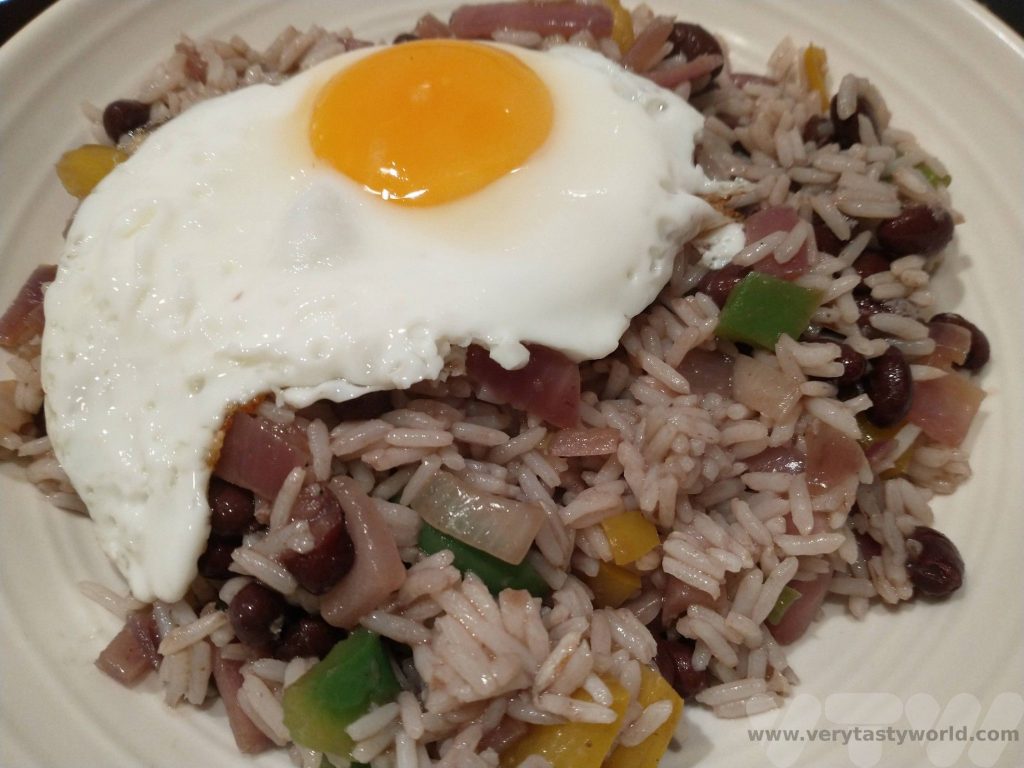
Gallo pinto can be eaten as a meal in itself but can also accompany other dishes. We enjoyed it with steaks, sausages and fried plantain amongst many other delicious ingredients.
Related Posts You May Enjoy

- Best Time To Visit Machu Picchu 2024 Update
- A 2 Week Patagonia Itinerary
- Day of the Dead in Campeche
- A Galapagos Land Based Itinerary
- RECIPE: How to Make Costa Rica’s Gallo Pinto
- A Tasty Puebla Food Tour
- Costa Rica Wildlife Sanctuary – Caño Negro
- Visit Torres del Paine National Park in Patagonia
- Atacama Desert Itinerary

- RECIPE Oyakodon Donburi
- Zero Waste Recipes Before Your Holiday
- RECIPE: Vegetable Biryani Tamil Nadu Style
- RECIPE: Vegan Wild Garlic Pesto
- Recipe: Venetian Pasta Sauce
- RECIPE: Biryani Raita Recipe
- RECIPE: How to Make Costa Rica’s Gallo Pinto
- Recipe: Japanese Simmered Pork Belly – Buta no Kakuni
- RECIPE: How to Make Umeboshi
Costa Rica Wildlife Sanctuary – Caño Negro
Beautiful Costa Rica is well known for its amazing wildlife. This relatively small country in Central America has twenty-three national parks, three of which are UNESCO sites. We took a trip from the east coast to the west, visiting many wildlife parks. The tourism infrastructure is really well developed with easy transportation between locations and many tour operators that can offer trips to various attractions.
Please note that this post contains affiliate links. If you click through and decide to make a purchase we will make a small commission, at no extra cost to you, which will help towards the costs of running this site.
Having enjoyed Tortuguero, where we had been lucky to see a greenback turtle nesting, we moved onto La Fortuna de San Carlos, close the Arenal volcano, in the middle of the country. It is an ideal location to use as a base to explore this region and there are loads of exciting activities to undertake in the area, from caving to wildlife viewing.
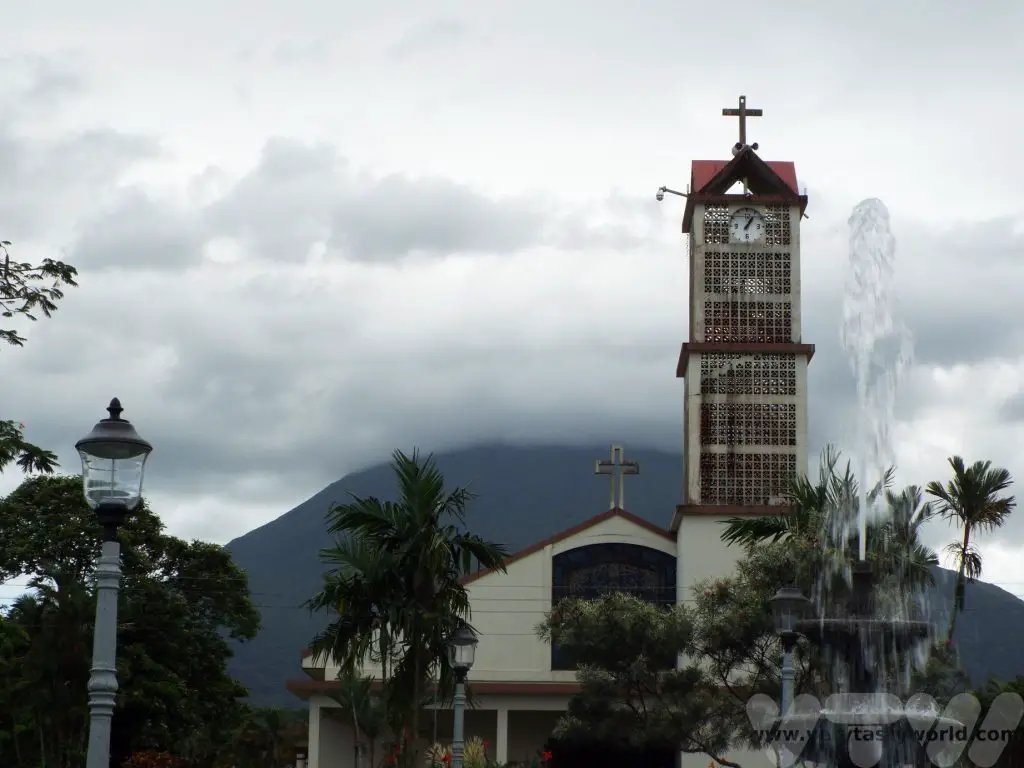
One of the trips we enjoyed was to the Caño Negro wildlife sanctuary. As with most tours in Costa Rica, there are companies in La Fortuna that can arrange the trip and will pick you up from your hotel or guest house.
It’ll take a couple of hours to get there from La Fortuna. Our guide was a naturalist who was not only knowledgeable about the local wildlife but was also really keen to tell us all about the fruit that grows in the region as well.
The Caño Negro, close to the Nicaraguan border, is a Costa Rica wildlife sanctuary which has the status of a national park, a Ramsar wetland of international importance, and one of the most biologically diverse areas in the country.
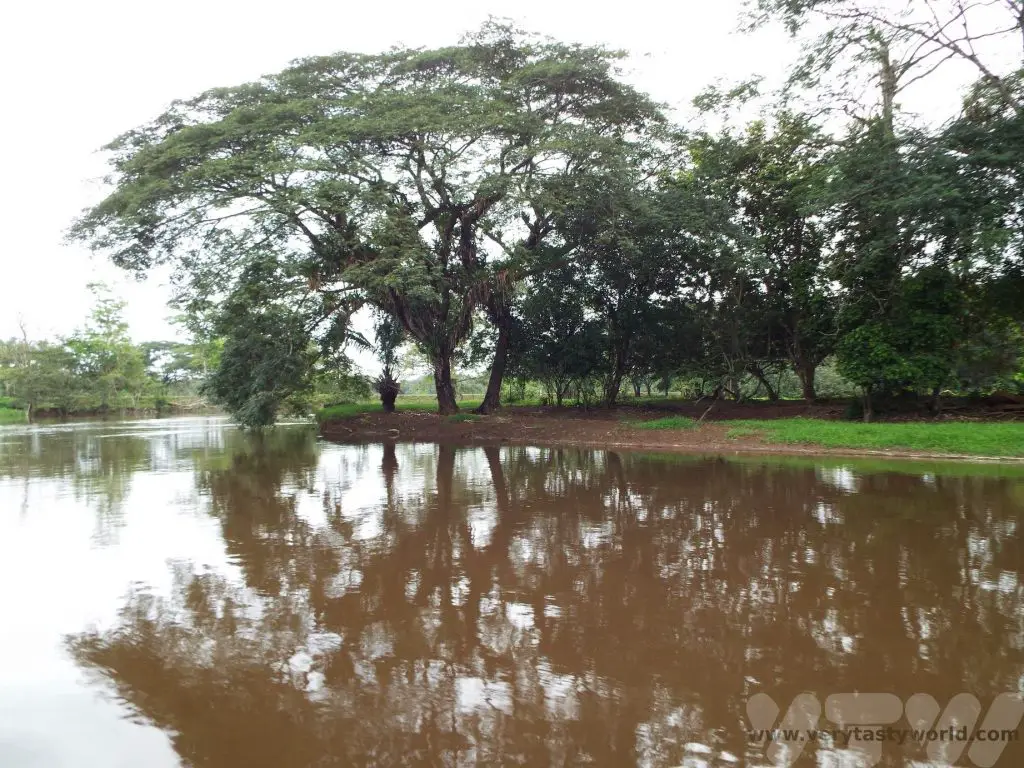
Boat Trip on the Río Frío
Once at the Caño Negro you can board a boat and enjoy a fascinating cruise up and down the Río Frío.
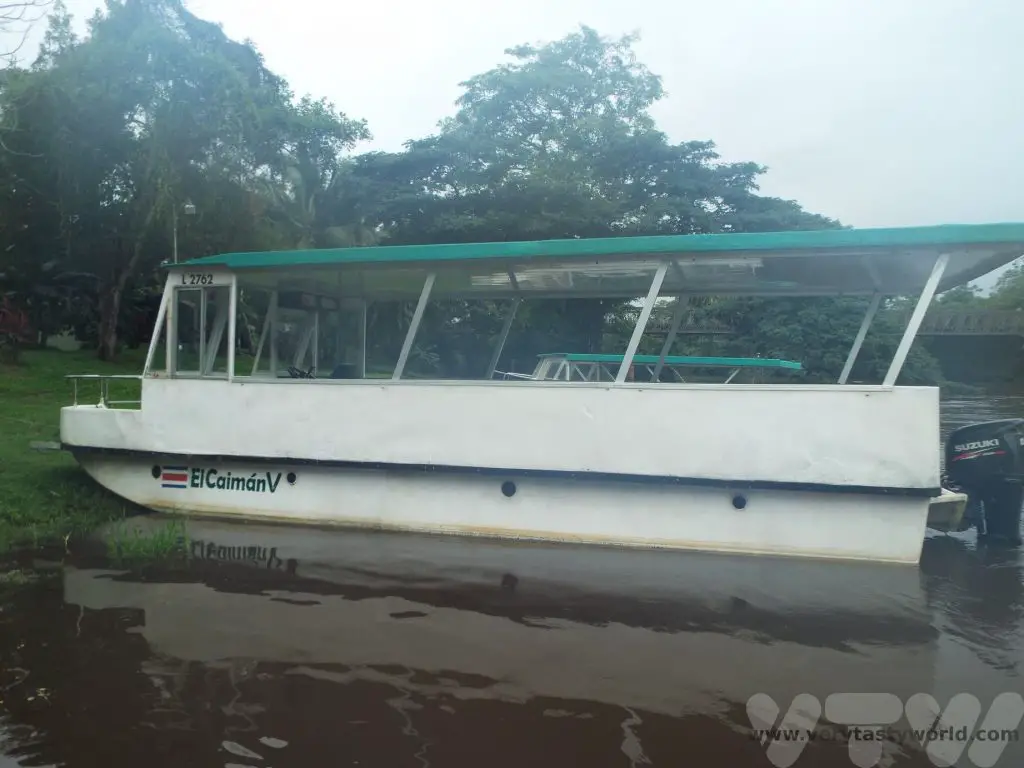
Wildlife viewings are pretty much guaranteed. Good guides will be able to spot plenty of birds, reptiles and mammals and, importantly, be able to point them out so that you can take pictures. Of course, you may not get to see the more elusive residents: the cougars, jaguars and ocelots, but there were plenty of monkeys, iguana, caiman, beautiful birds and, of course, sloths to see.
Howler monkeys are the loudest monkeys in the area. Their calls can travel 5km! They use the vocalisation to communicate with each other and establish territory.
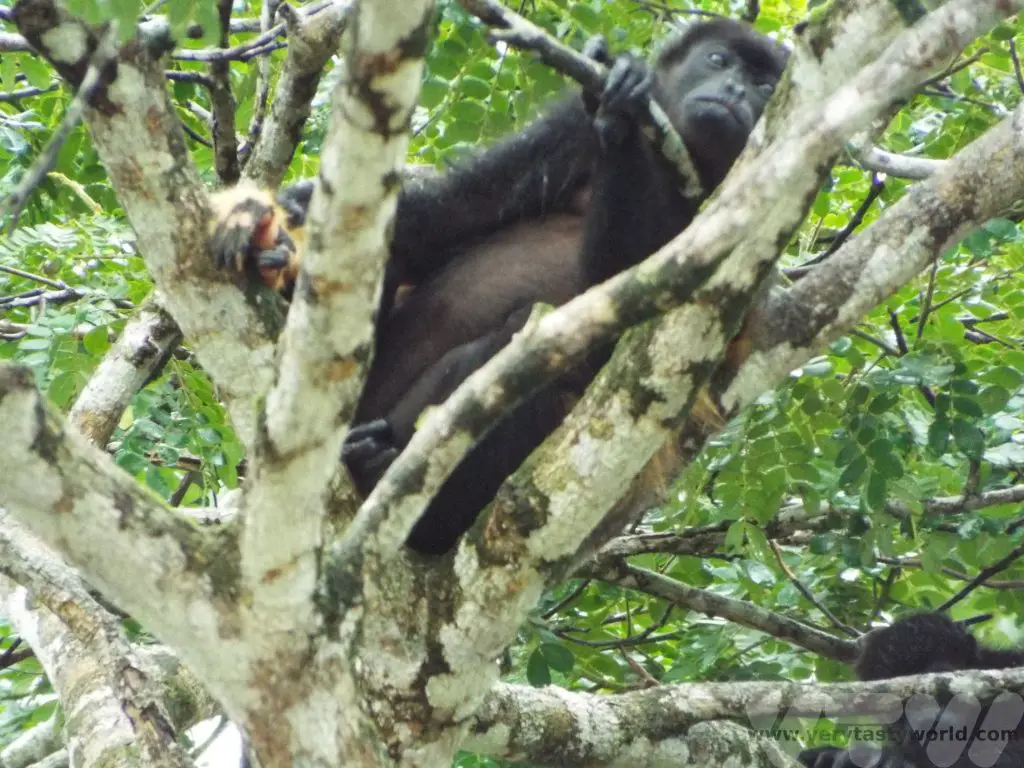
White faced monkeys, also known as capuchin monkeys, look adorable but are very naughty. They are regarded as the most intelligent of the monkeys in the region but can be quite vicious, fighting over the fruit in the trees and stealing from each other.
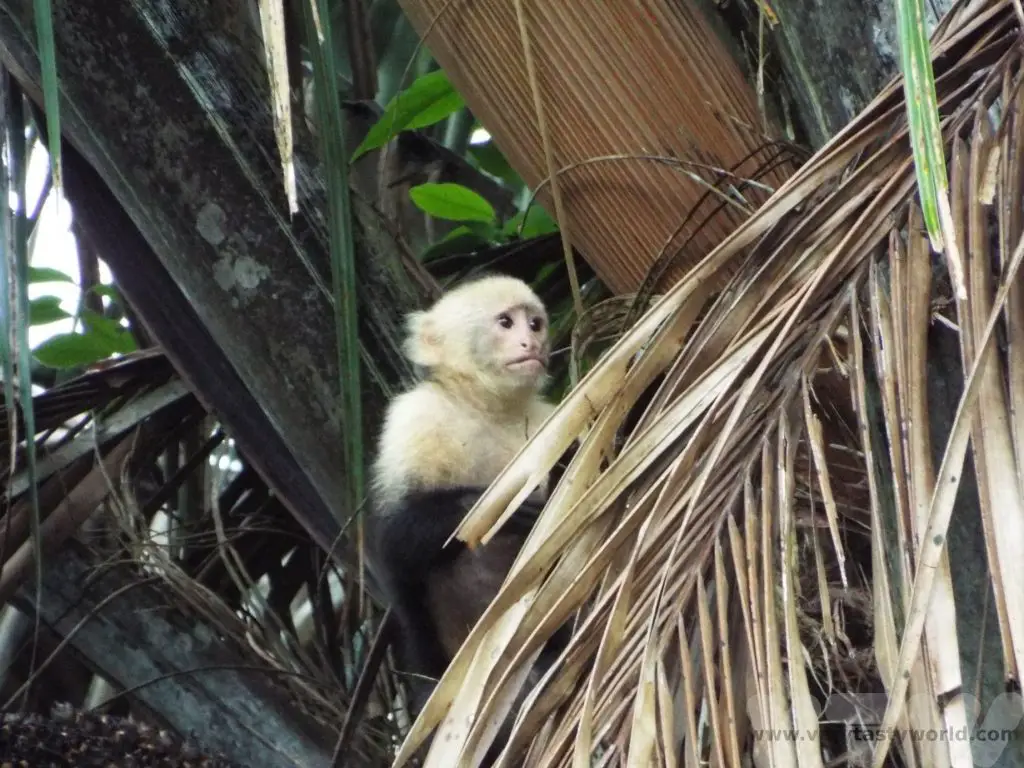
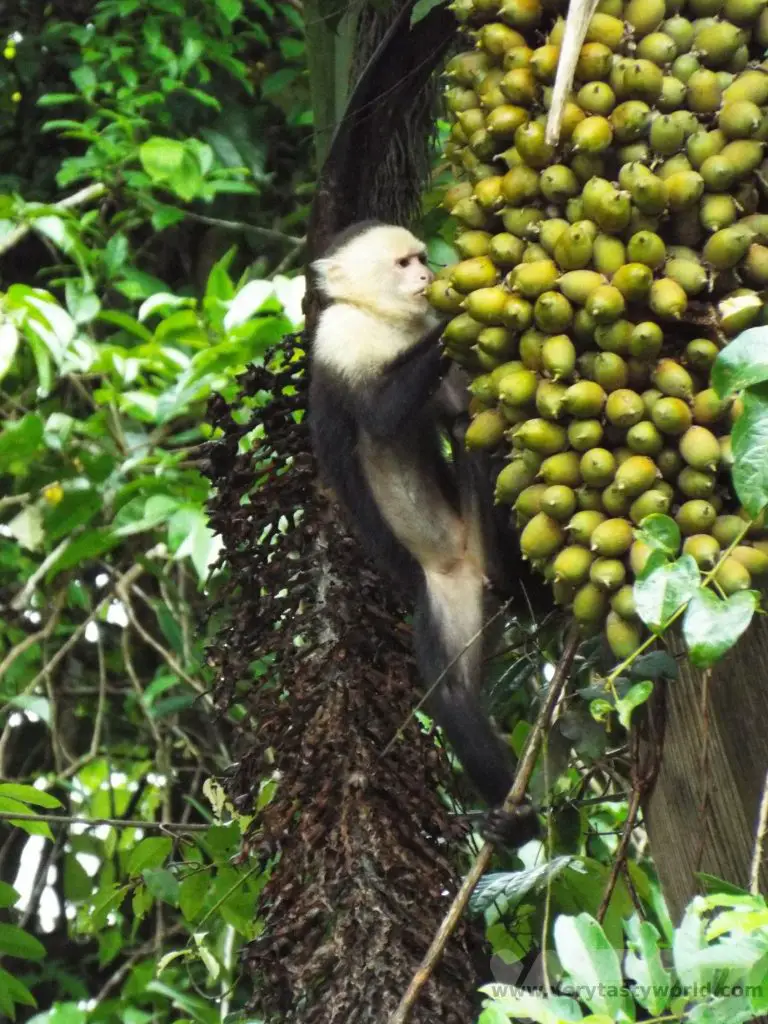
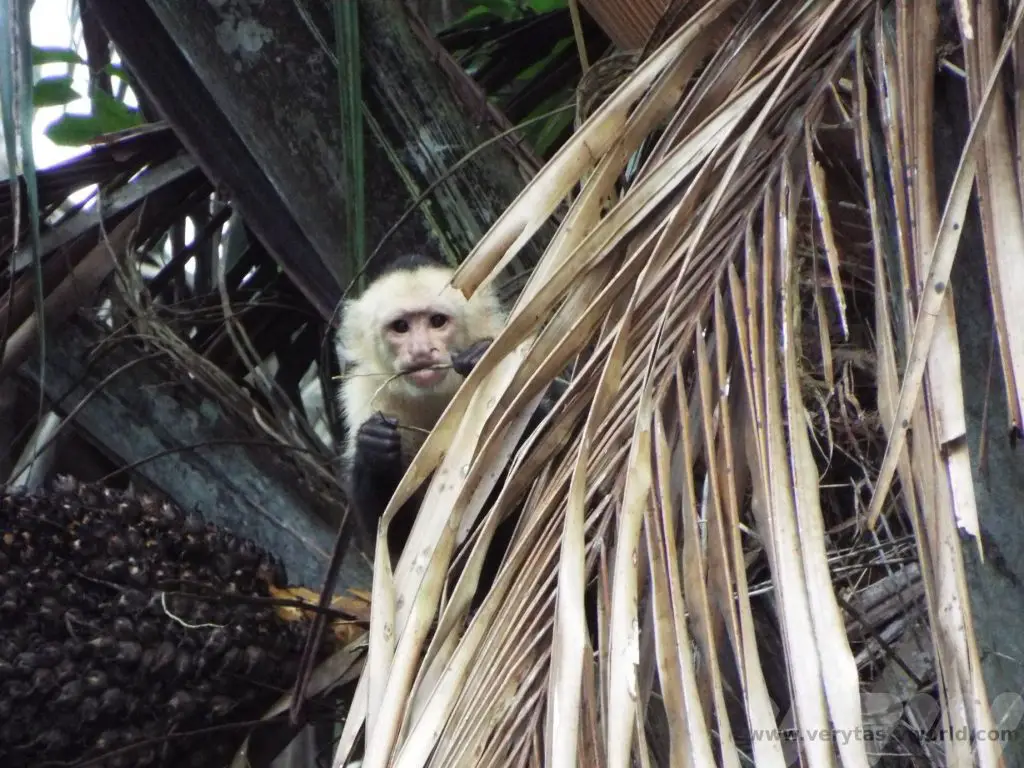
This beautiful kingfisher got lucky catching a fishy snack.
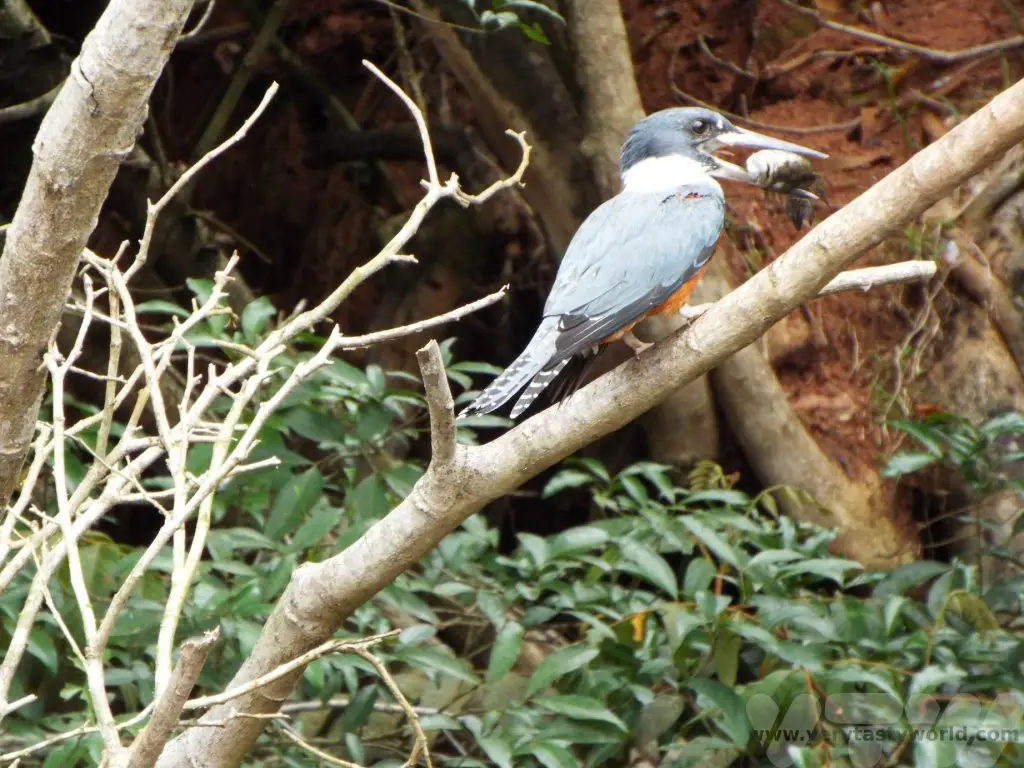
And this egret was having a good wade searching for food.
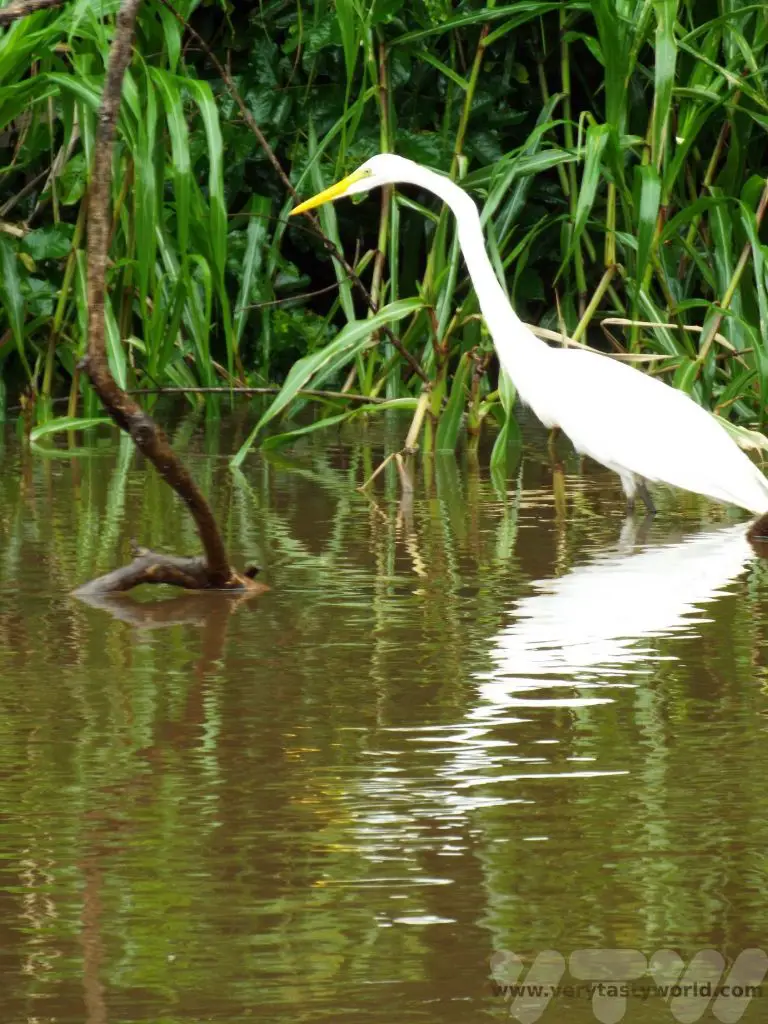
And there were plentiful iguana hanging around in trees and on the surrounding fields.
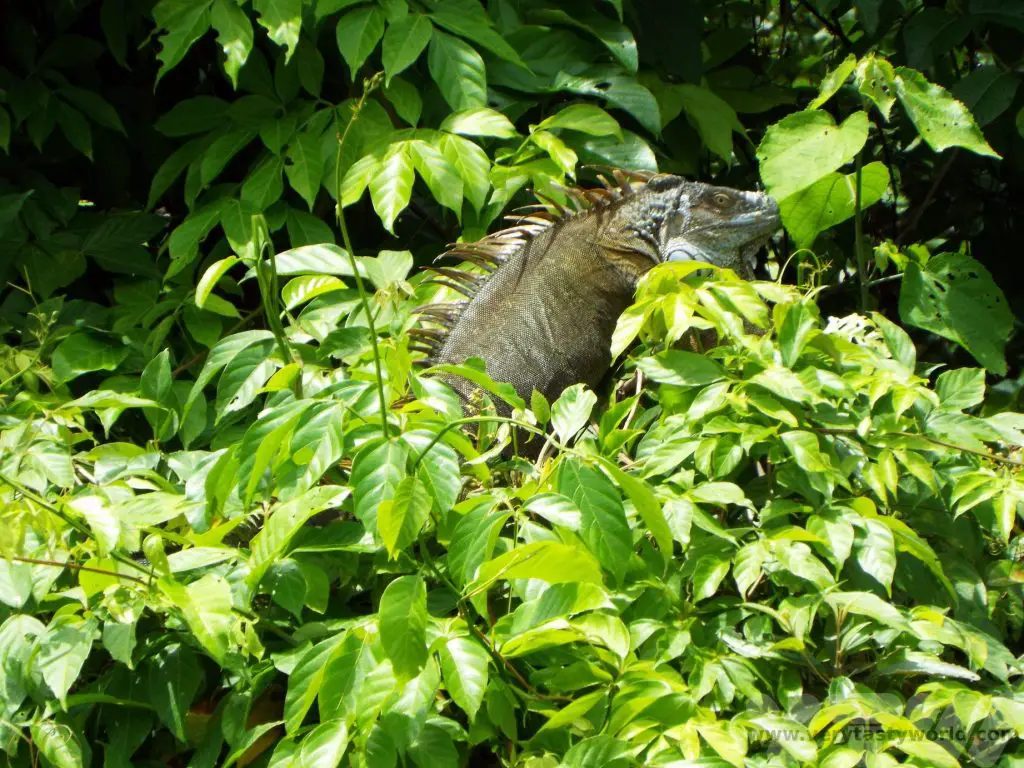
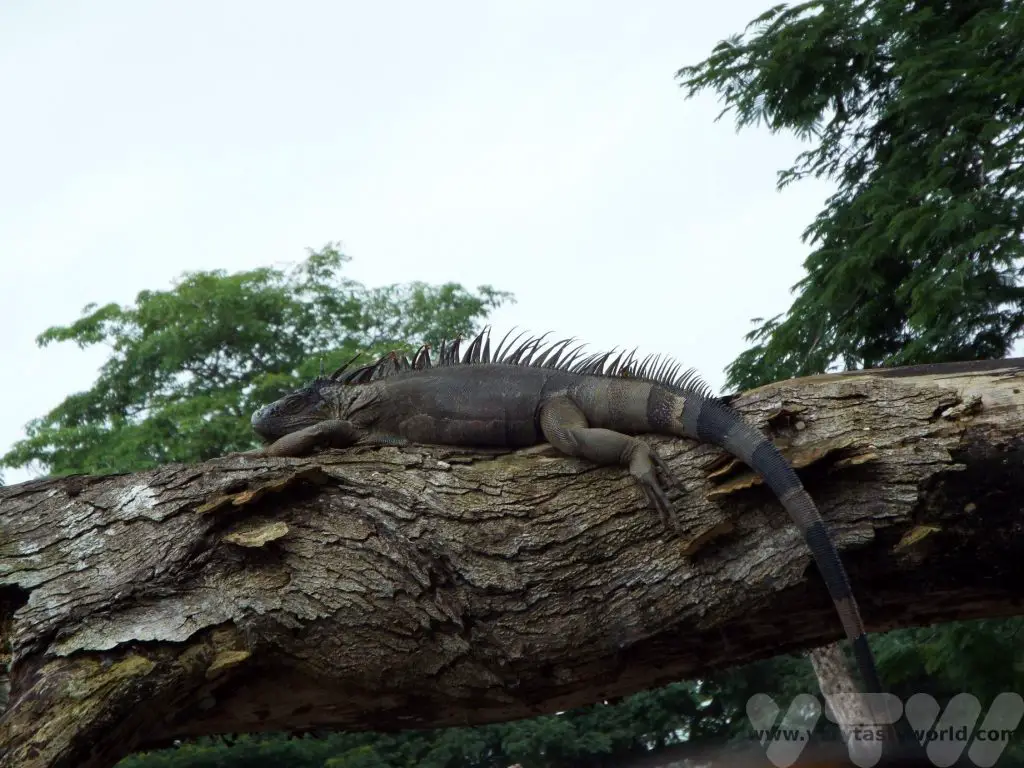
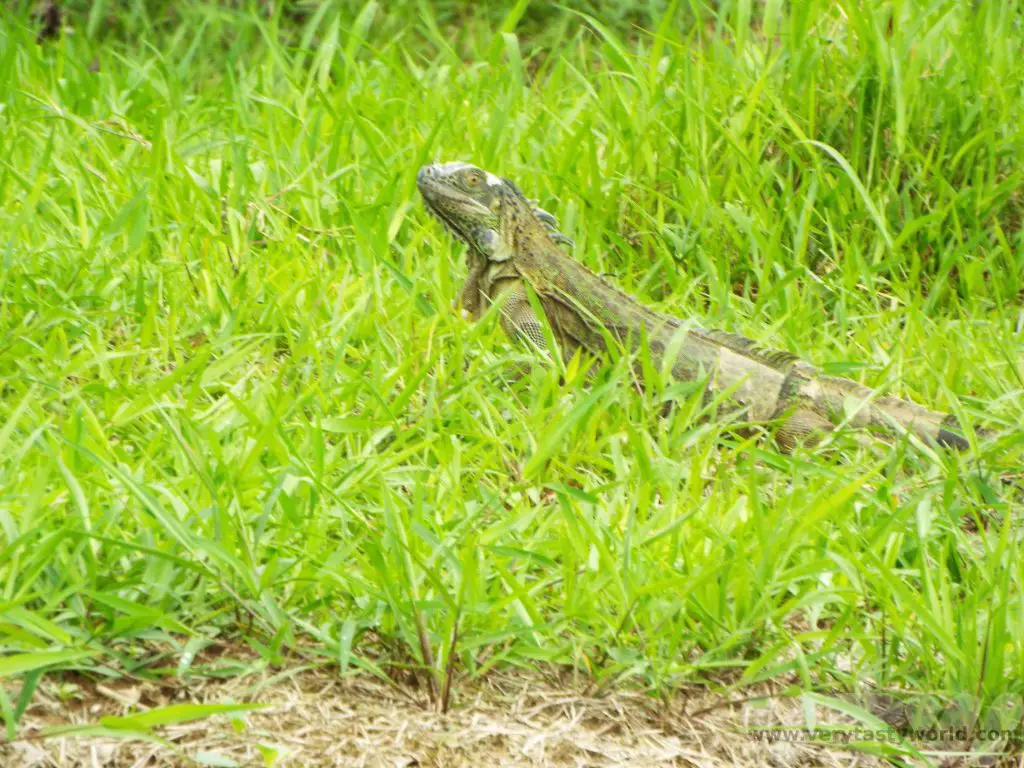
The anhinga is also known as the snake bird because when it swims in the water you can only see its elongated neck, which has the appearance of a snake gliding through the river.
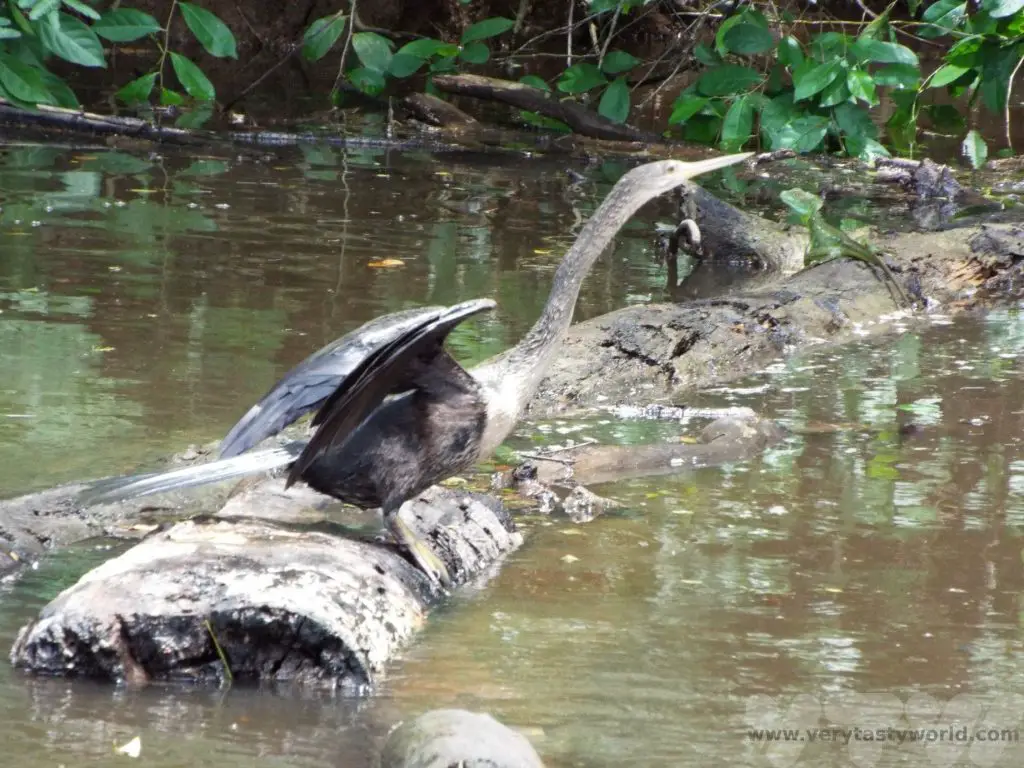
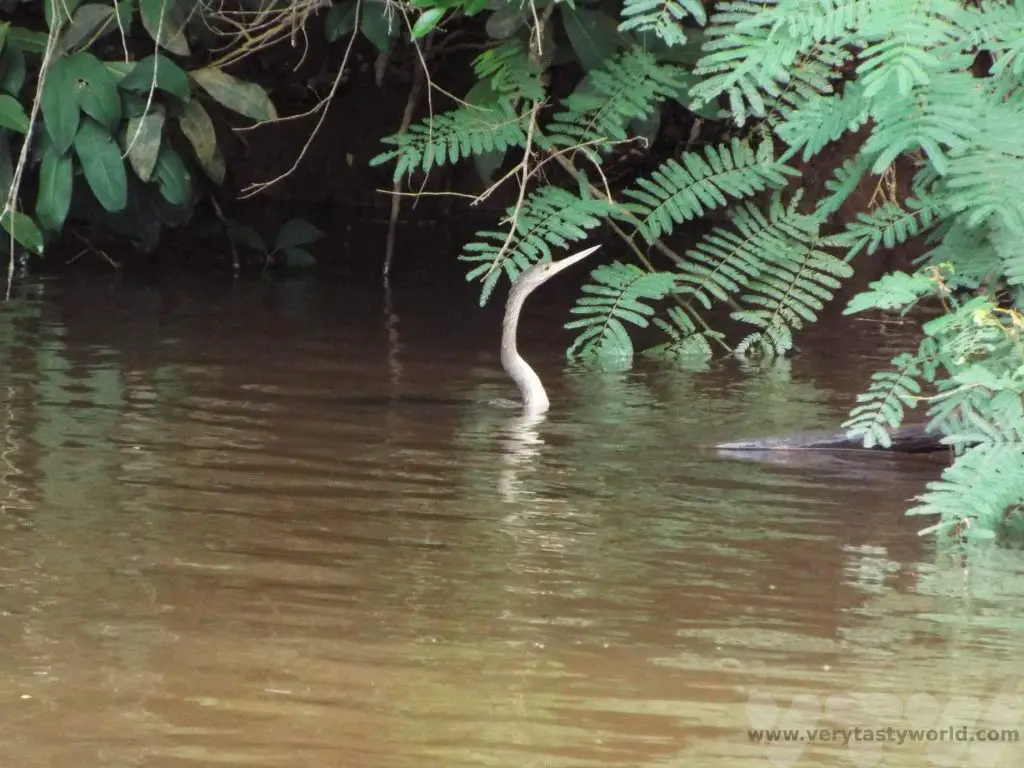
The Jesus lizard, or to give it its correct name, basilisk lizard, derives its moniker from being able to run across the water on its rear legs. It is possible for the species to do this because they have little scales on their back toes which form webs that trap water and air bubbles underneath them. If they run quickly enough the bubbles underneath these webs prevent them from sinking into the water. The lizards are able to swim if they go too slow.
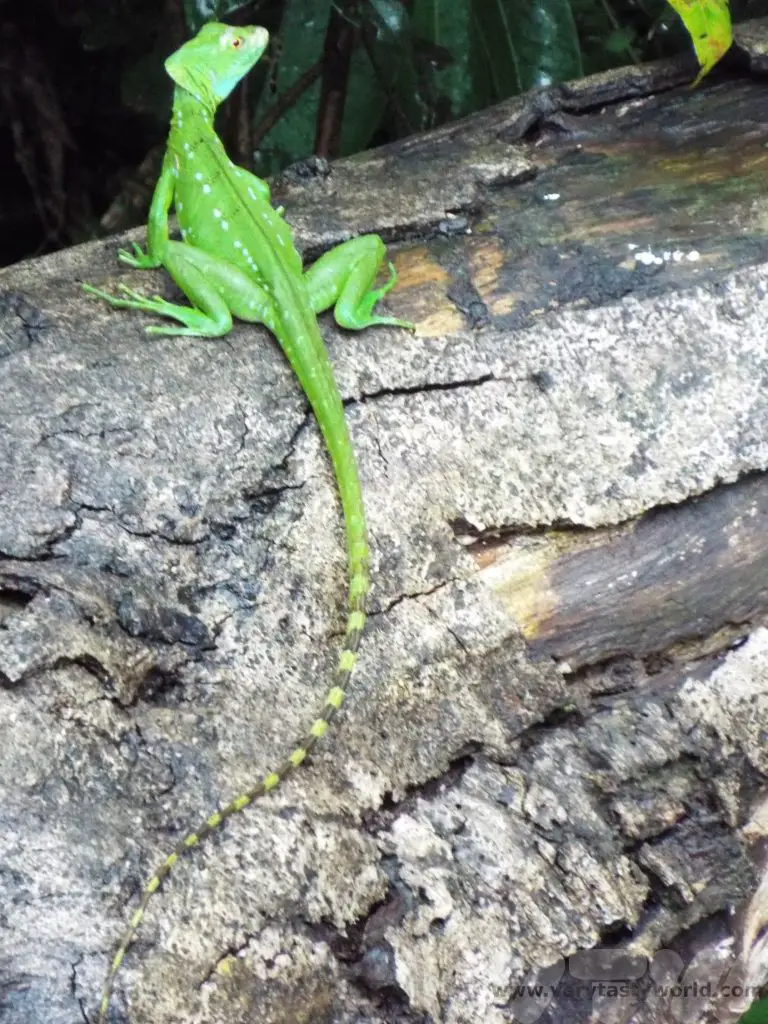
We sailed past a nonchalant caiman.
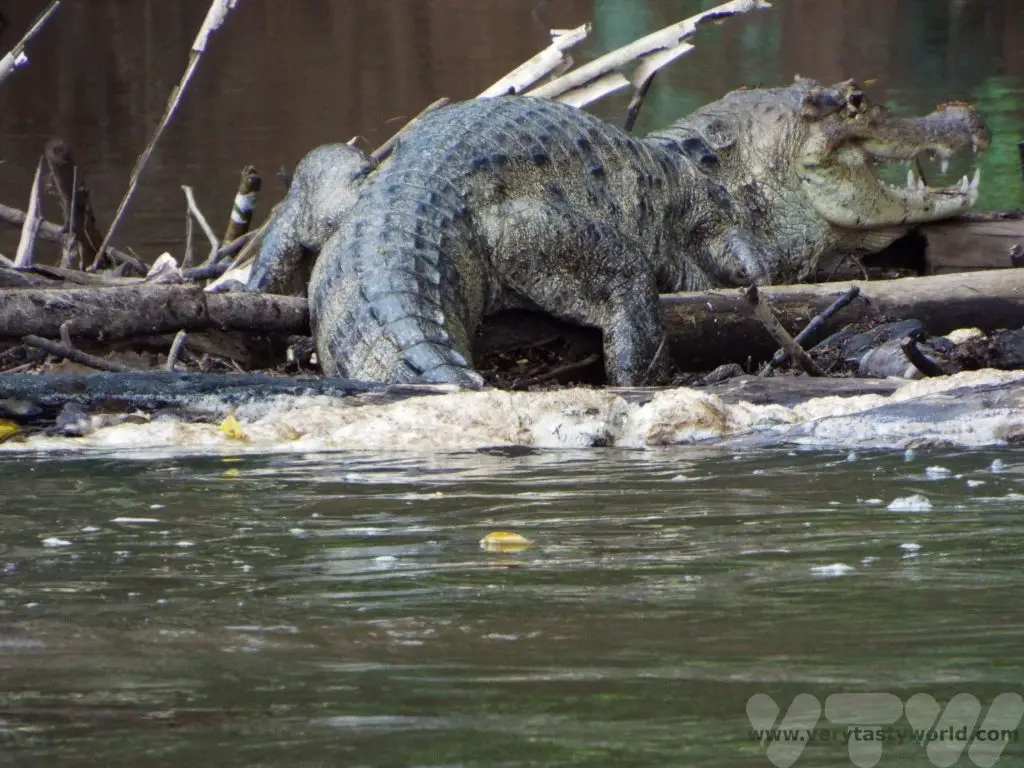
Sloths are probably the creature that most visitors to Costa Rica definitely want to see. On this excursion we saw a Two-Toed sloth, hanging around in the tree, which is what sloths do best.
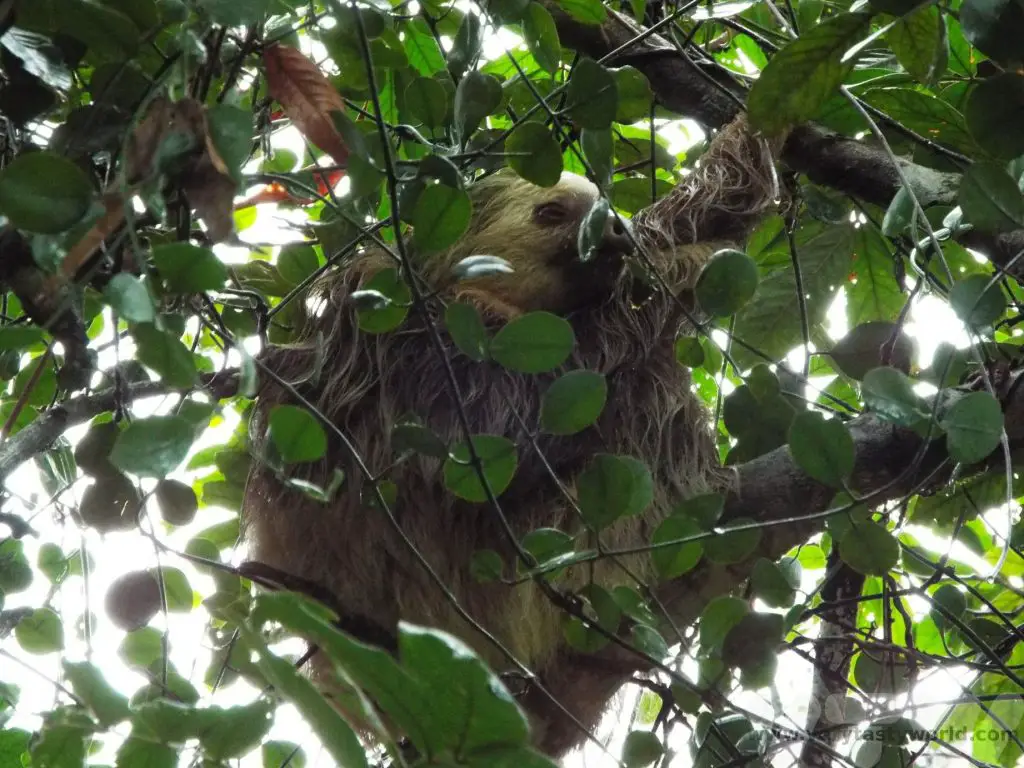
There are two species of sloth in Costa Rica: Two-Toed and Three-Toed. (We did see the Three-Toed Sloth, but on the Pacific coast, not on this river trip.) They are absolutely fascinating creatures – they appear to be incredibly lazy but this is largely because they have a very slow metabolism and most of their time is spent in the tree canopies. They have a multi-chambered stomach that is capable of digesting tough leaves but the digestion process takes a very long time. Once they are up a tree they will stay there for several days, only coming down for a poo, which happens once week. Pretty much everything else happens in the trees – eating, sleeping, mating, even giving birth.
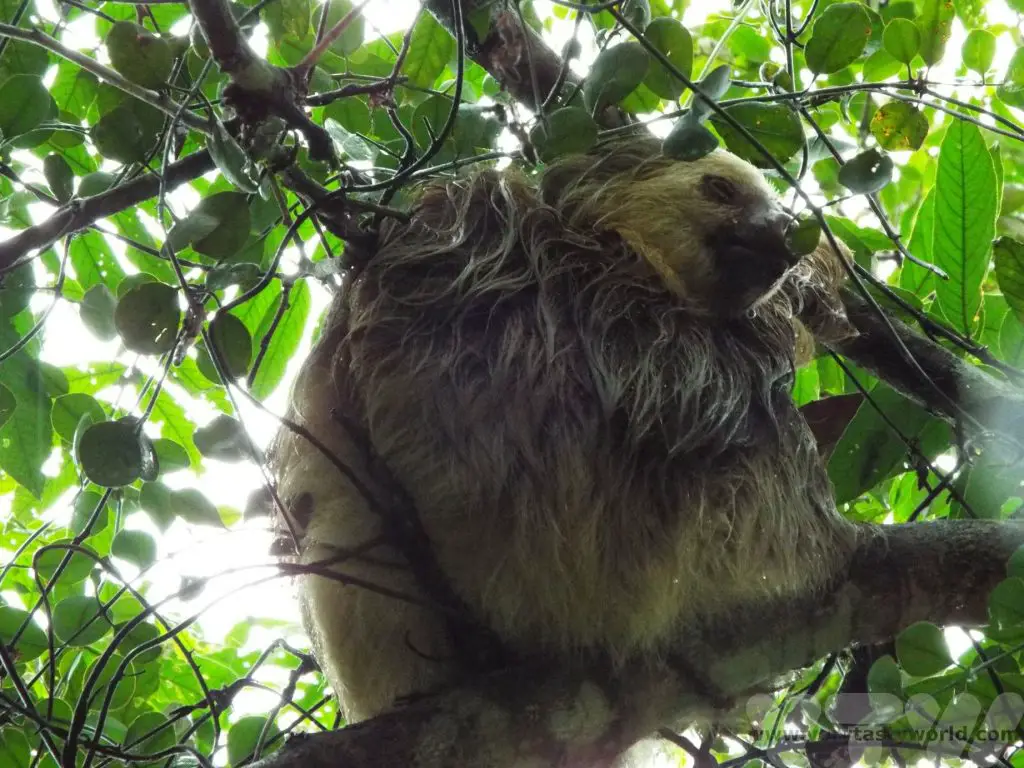
They are often covered in green algae, with which they have a symbiotic relationship, the algae providing them with some nutrition. In turn, the sloth’s fur, which retains water well, is an idea environment for the algae to thrive. It also helps provide camouflage – the sloth’s natural predators include ocelot and jaguar.
The species have been around for 65 million years, so there’s probably something to be said for taking things easy in life!
A Downpour
The river trip was hugely enjoyable but as we were travelling in the mid-season in June/July (it is rainy but not hurricane weather) we did experience something of a downpour. When it rains in Costa Rica, it rains! (Some areas we visited receive around 5000mm annually.) The showers at this time of year are extremely heavy but usually short-lived, lasting no more than twenty minutes to half an hour. The boat had a roof and our captain kindly rescued some kayakers who were enjoying their gentle paddle on the river until they got a complete soaking! They were hugely relieved when we picked them up and they stepped aboard looking somewhat bedraggled. We always recommend bringing wet weather gear if travelling at this time of year.
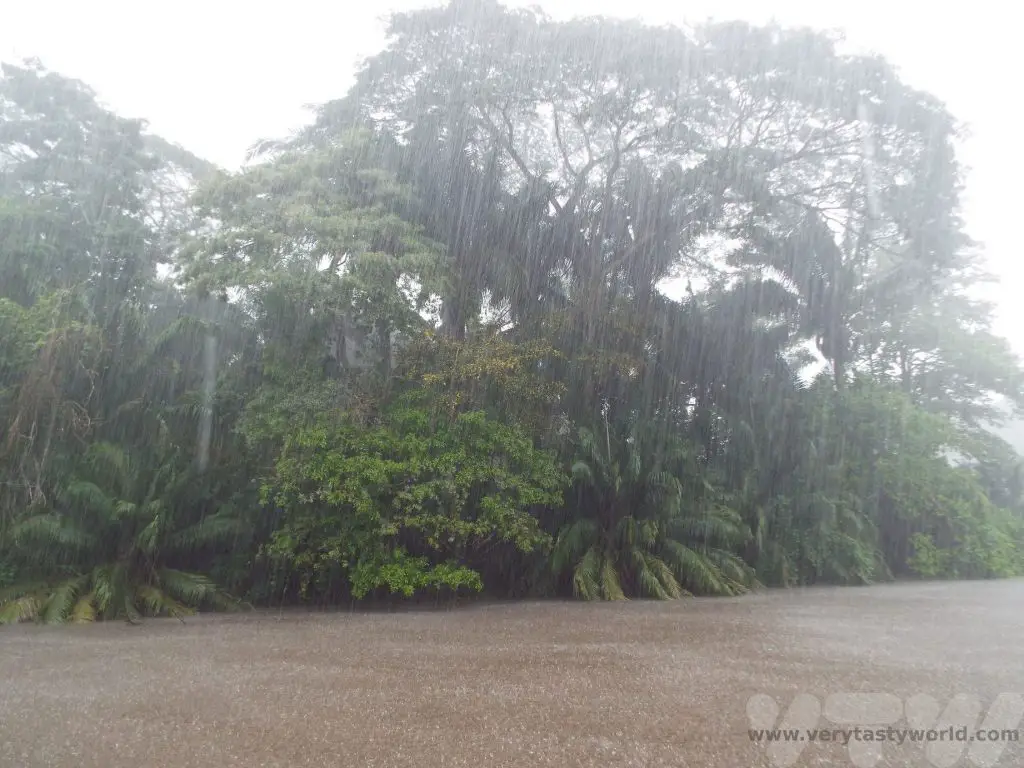
Feeling Fruity
After the boat trip through the wildlife sanctuary, lunch was provided. It was quite common at the end of most excursions we enjoyed in the country. We were treated to a fruit feast.
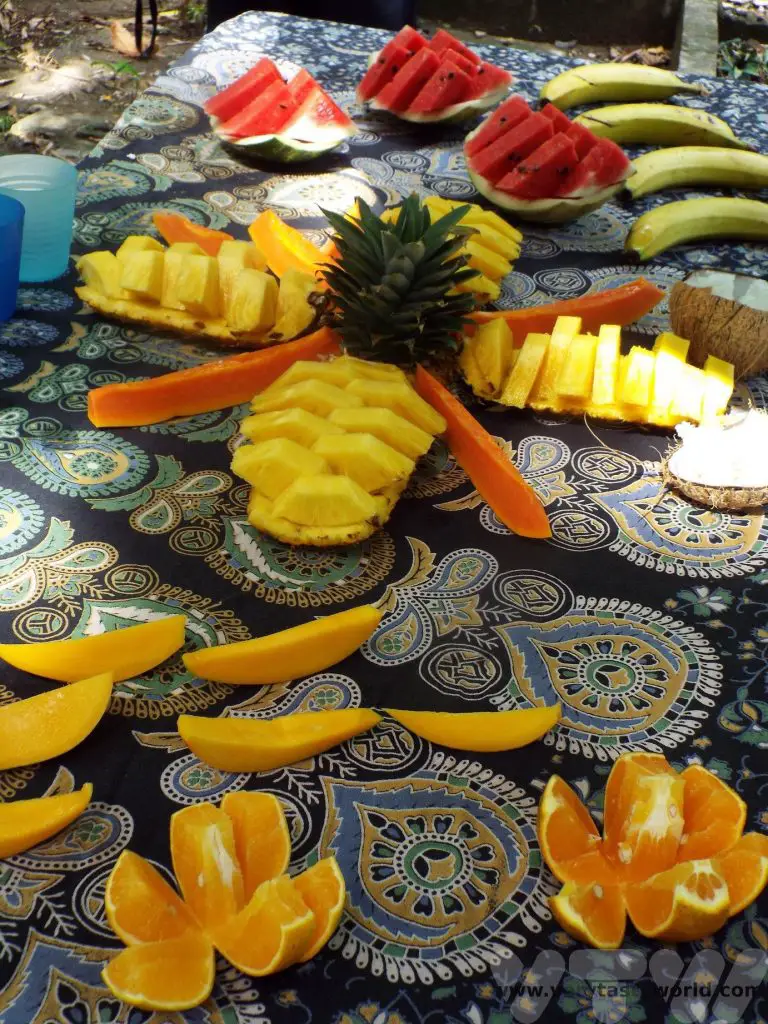
One of the wonderful things about Costa Rica is the utter deliciousness of the fruit. Around the Arenal Volcano area the soil is incredibly fertile and on our way to Caño Negro we saw vast plantations growing all sorts of fruit. In fact, the tour guide stopped the minibus a couple of times to buy some fruit from local sellers, so that he could offer us a taste. He also provided a running commentary throughout the journey telling us about the fruit industry in Costa Rica.
The pineapples were a revelation. Even the freshest pineapples we’ve ever eaten in the UK (often from Costa Rica!) were nothing compared to the organic local fruit. Most pineapples that are grown for export are treated chemically where they are stored (they can last up to a year) and ripened after they have arrived at their destination. It is such a shame that so many pineapples are grown this way – it isn’t good for the environment and the fruit’s flavour isn’t as good as it could be. Compare that to an organic pineapple and the taste is completely different. The local fruit had a really rich vibrant flavour, both sweet and tart.
The pineapple is actually a flowering plant. Only one flower grows each year per plant and it is only possible to gain a pineapple in three successive years. The first year’s is the biggest and these are the ones that are usually exported overseas. The second year’s pineapple is smaller and would generally be used for the local market or taken to a processing factory where it would likely end up in a tin. The third year’s fruit will be very small and will become juice.
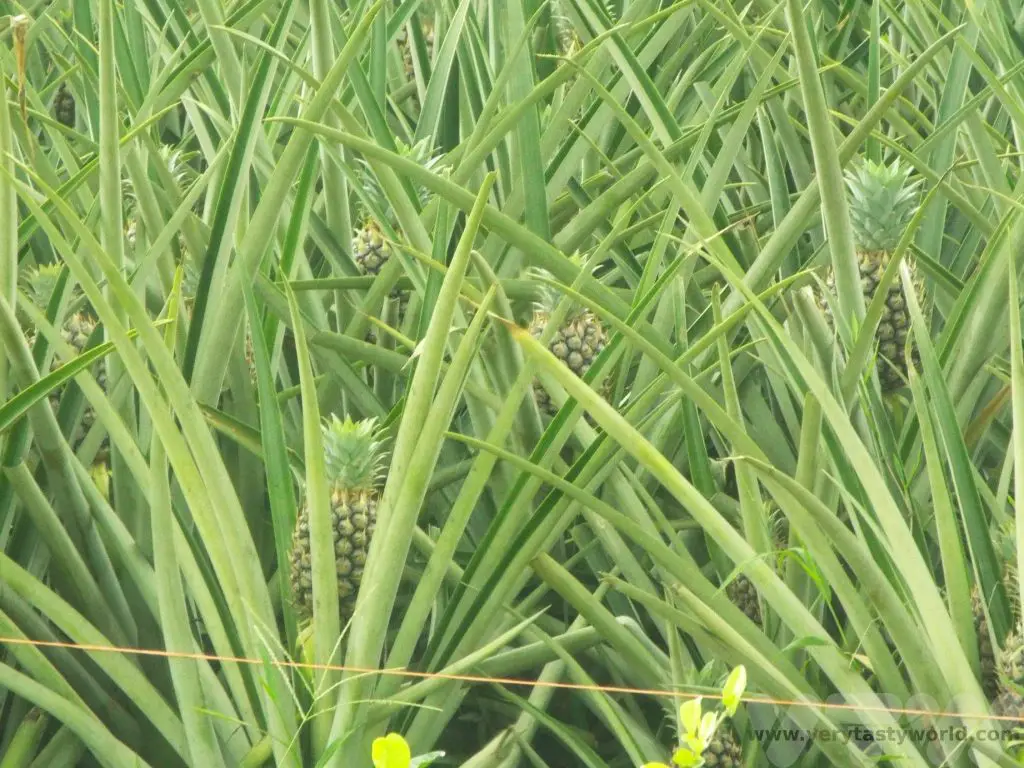
There’s a perception in many western countries that oranges should actually be orange. But many oranges aren’t as luridly orange as those classic fruit from Seville. The oranges in Costa Rica might not look the part but taste just fine. Bananas are another fruity staple of Costa Rica and plantations can be seen all over the country.
Many of the fruits grown in the country are familiar as they are exported around the world. However, there are some more unusual offerings which we were delighted to discover. Rambutan, also known as Mamon Chino, which apparently translates to Chinese Sucker, is a bizarre looking tropical fruit. You have to peel the pretty and colourful soft spikes to reveal the clear coloured flesh. They look similar to grapes or lychees and have a comparable texture although the flavour is very different, sweet and slightly sour, and nowhere near as perfumed as a lychee. There’s a seed inside that you need to be aware of – don’t bite too hard!
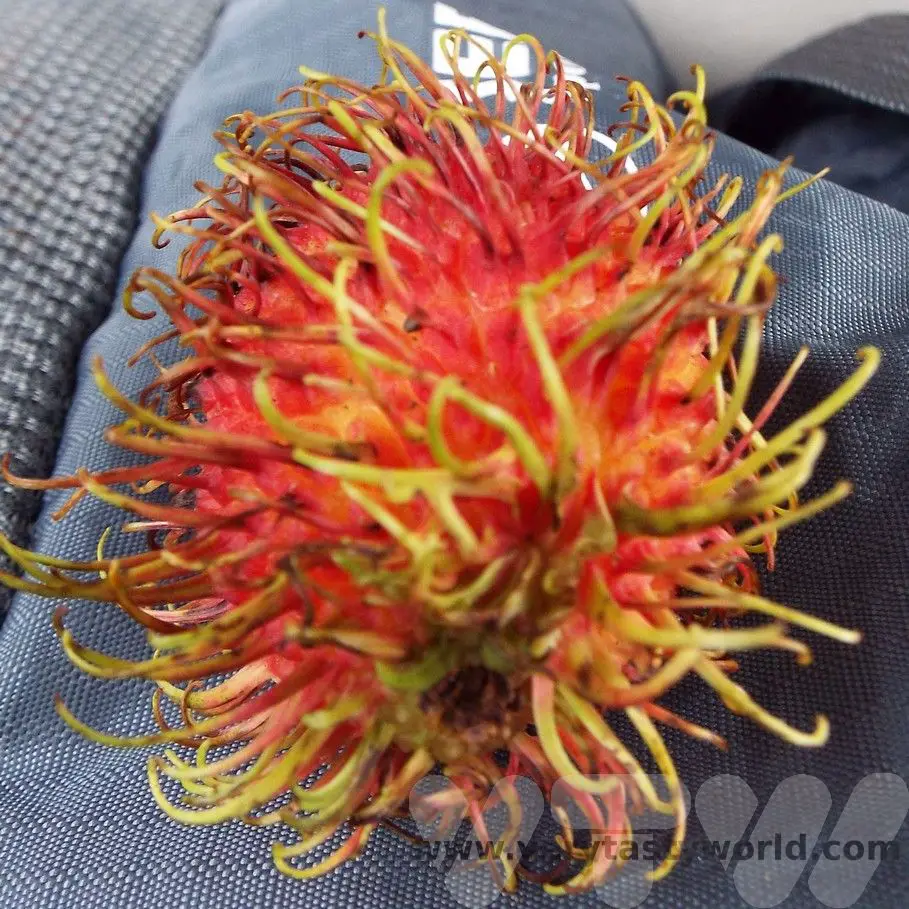
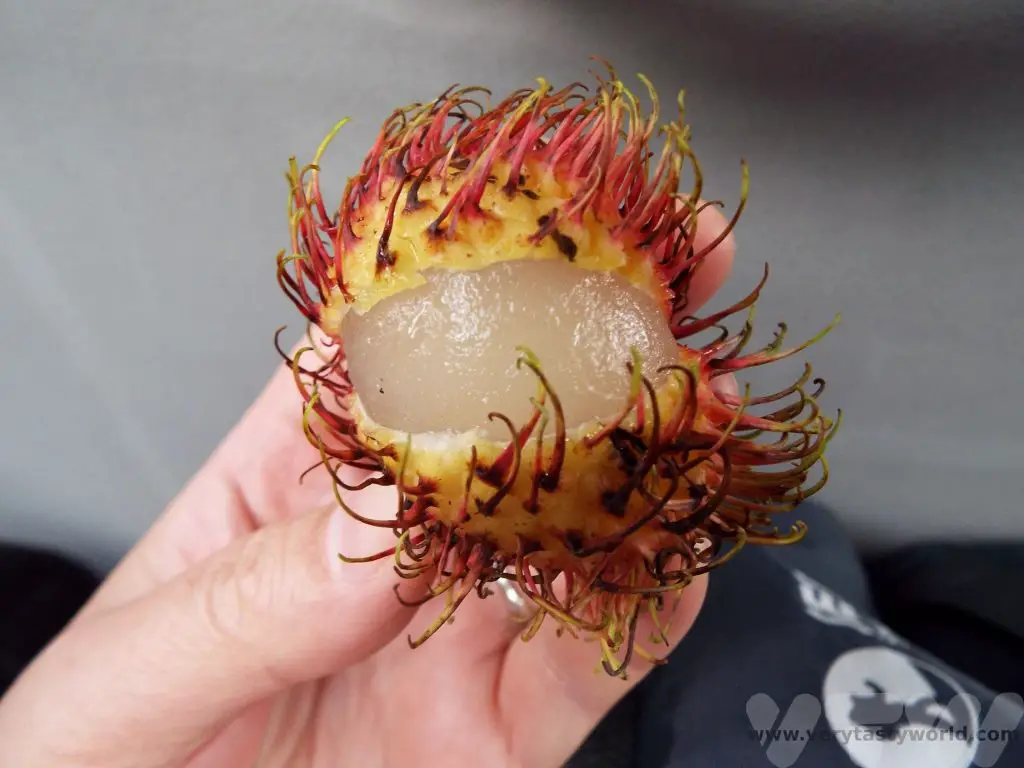
Noni is smelly and tastes bitter but apparently has health benefits. It’s not a fruit you would eat for pleasure. Some people mix it with other fruits in smoothies to disguise its flavour.
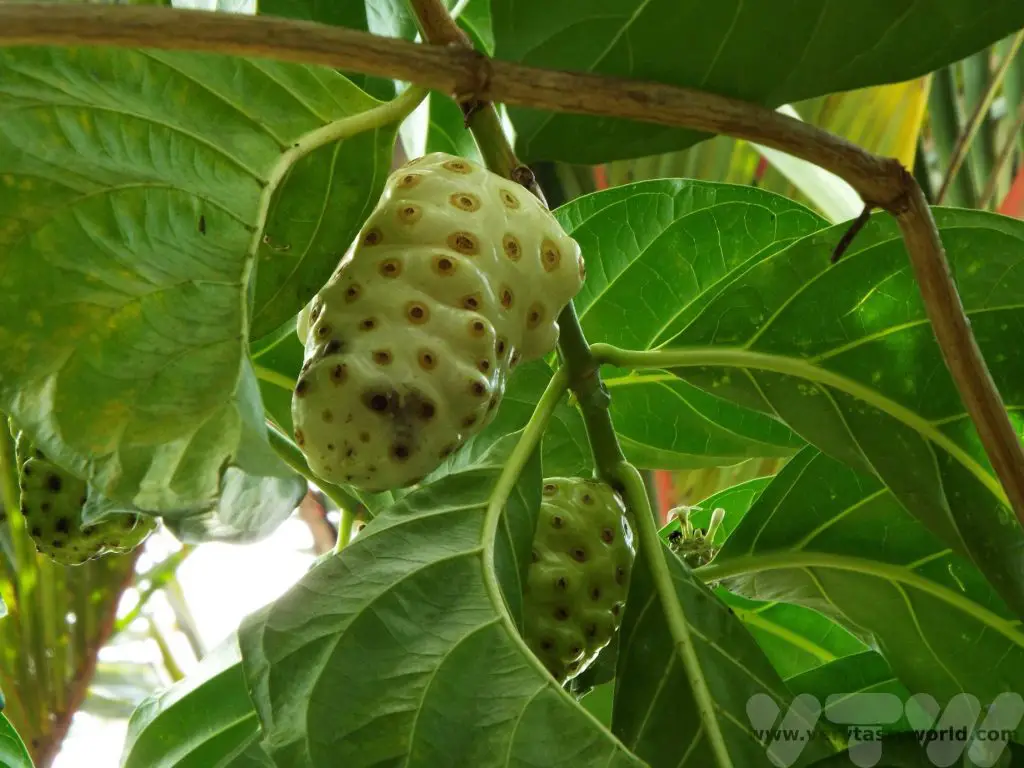
In Costa Rica you are guaranteed to enjoy at least ten of your ‘five a day’.
Related Posts You May Enjoy

- Best Time To Visit Machu Picchu 2024 Update
- A 2 Week Patagonia Itinerary
- Day of the Dead in Campeche
- A Galapagos Land Based Itinerary
- RECIPE: How to Make Costa Rica’s Gallo Pinto
- A Tasty Puebla Food Tour
- Costa Rica Wildlife Sanctuary – Caño Negro
- Visit Torres del Paine National Park in Patagonia
- Atacama Desert Itinerary
World’s Best Breakfasts -Breakfast of Champions!
….And Why It’s Often Okay to Go Off-Menu When Travelling
Many years ago we were excitedly choosing all sorts of delicacies at the breakfast buffet at our hotel in Yerevan, Armenia, when another guest glanced at our plates, shrivelled their noses in a very patronising manner and exclaimed, “Ugh! Salad? For breakfast?” It’s widely considered to be most important meal of the day but so many people seem to be set in their ways when it comes to eating a hearty breakfast. So much that hotels all over the world seem to offer pretty much the same fare. Western visitors are often offered fried food such as bacon, sausage and eggs with bread-based accompaniments and Eastern visitors are usually offered rice or noodle dishes. All these dishes are generally familiar to the tourist and often don’t reflect the traditional breakfasts of the country they are visiting. Here are some of the world’s best breakfasts.
Maybe it’s because people don’t feel so adventurous first thing in the morning, and that’s fair enough, but they may be missing out. Thing is, we’re British and can have bacon and eggs any time we like. (Although, to be honest, we haven’t cooked a fry-up for years as it’s quite a lot of effort.) We’d much rather eat a typical breakfast using local ingredients from the country that we are visiting.
It’s quite common for hotels to ask their guests to pre-order breakfast. It makes sense, they know what they need to order in beforehand and this can help minimise food waste. There is usually a form with tick boxes and you can choose from a variety of typical breakfast offerings. But if you do want to eat like a local, we’ve learned that many hotel restaurants are happy to cook you a regional breakfast. We’ve discovered that very often it’s absolutely okay to go off menu.
It all started in Uganda when we breakfasted at a lodge with a local guide. We were eating standard fare but our curiosity was piqued when something entirely different was brought out for him. On asking, we learned that it was a rolex – a chapati with a layer of omelette on top, then rolled into a spiral cylinder, perfect for munching on. So the next day we asked the lodge staff if it would be possible for us to have a rolex for brekkie and they were happy to oblige. It’s great – tasty and filling – a good start to the day.

In Nepal we were given a standard pre-order form to complete (eggs, bacon, sausage, toast…) to pre-order breakfast for the following morning. We politely asked whether it was possible to have a local breakfast instead. We didn’t specify any dish – just asked for local food. They were delighted. The following morning we were served a marsala omelette accompanied by a joyous curry and roti with home-made yoghurt. It was delicious.
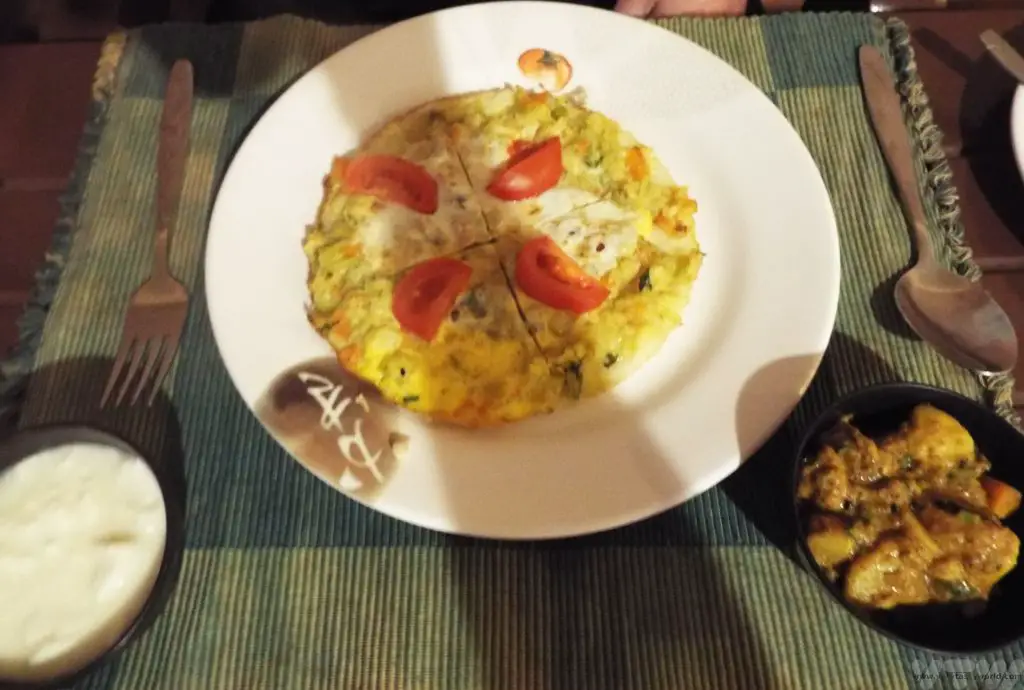
One of the world’s best breakfasts is gallo pinto from Costa Rica. It’s so popular it is often eaten for lunch and dinner as well. Which is just as well because it tastes great and is also really healthy. It comprises rice and beans and is usually accompanied by a fried egg at breakfast. Other accompaniments to start the morning include sausage, fried potatoes and some salad.
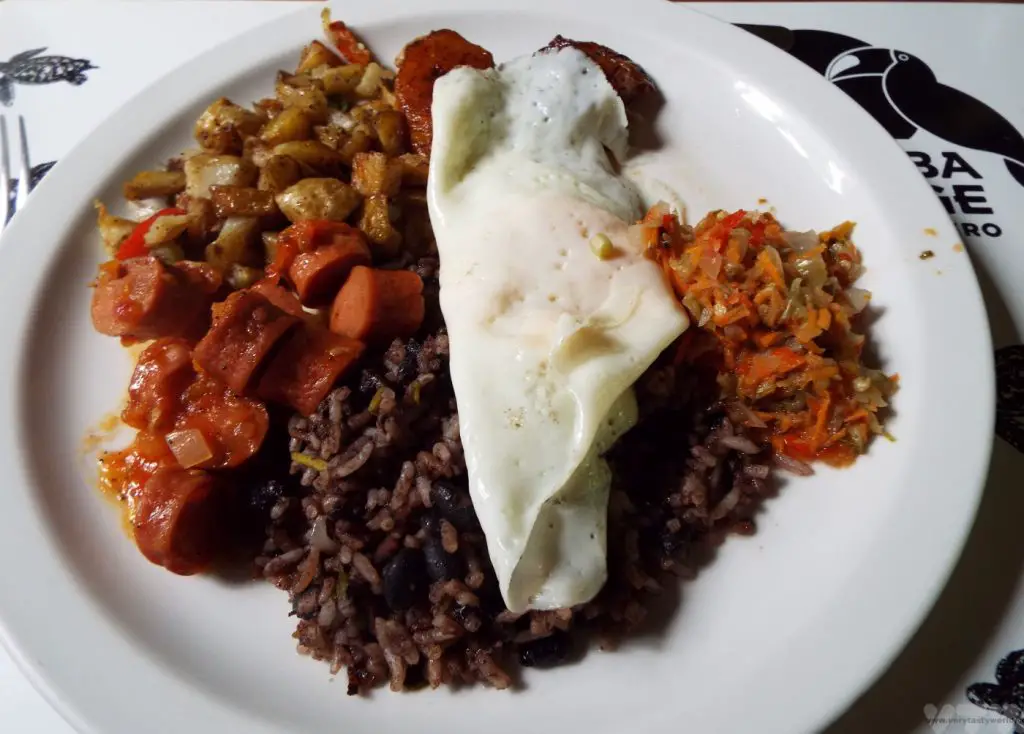
A dosa for breakfast in South India is an absolute joy. This is a pancake traditionally made from rice and dal (lentils) which are ground to form a batter and then fermented. The batter is cooked on a hot plate to form a large pancake and served with chutney – coriander, coconut and tomato are particularly popular.
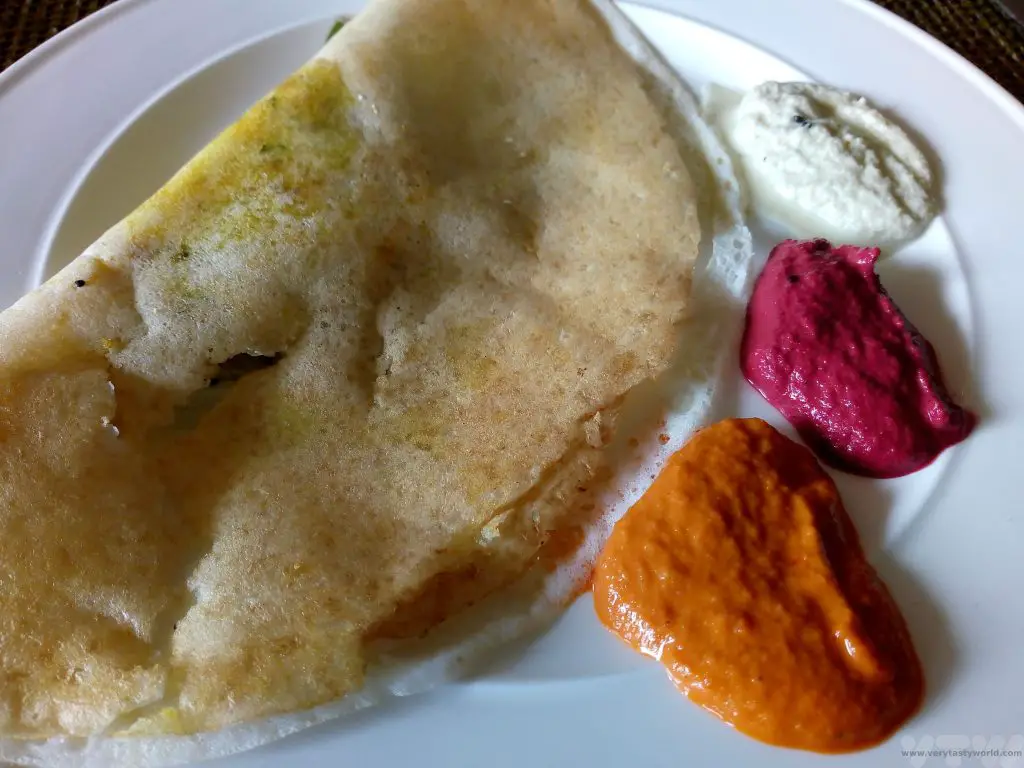
In Vietnam breakfast usually took a buffet form but often there were chefs on-hand to cook some food to order. We were always offered Pho – a tangle of noodles, freshly cooked and served in a yummy broth, topped with meat and vegetables. You pick up a side plate and add herbs, chilli, limes and other delicious items so that you can create your own personalised taste sensation. The liquid of the broth also ensured that we were thoroughly hydrated for the day ahead.
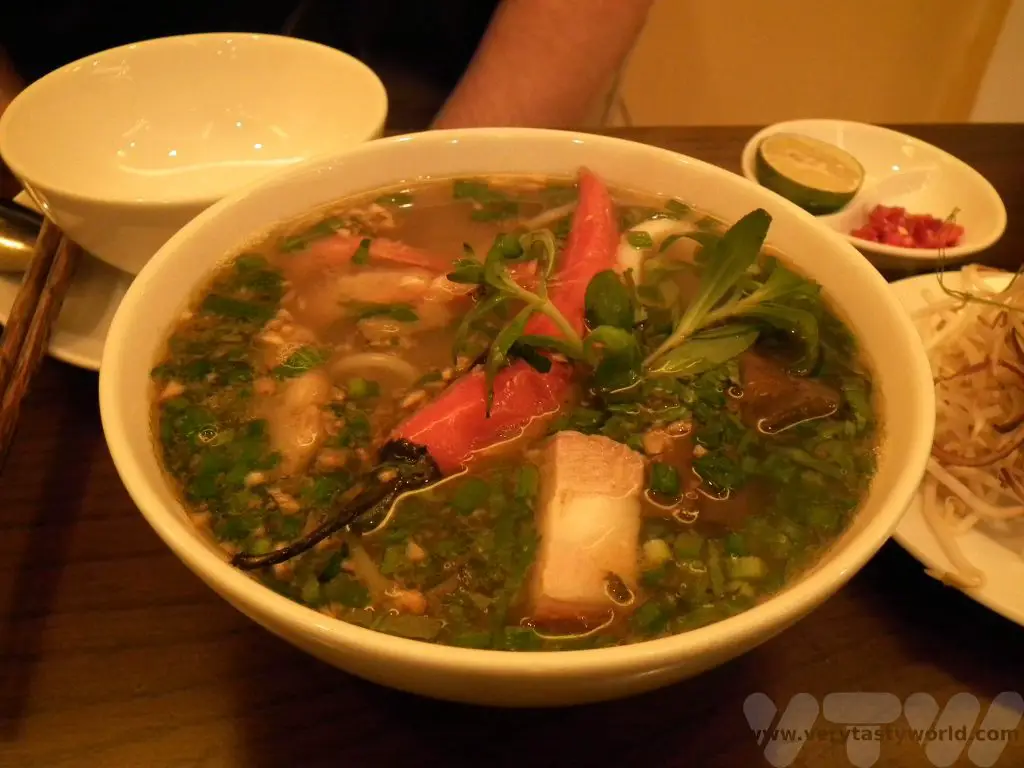
Japan also offers some of the world’s best breakfasts. A Japanese brekkie often comprises grilled fish, vegetables and pickles, maybe with tofu, dumpling and an omelette.
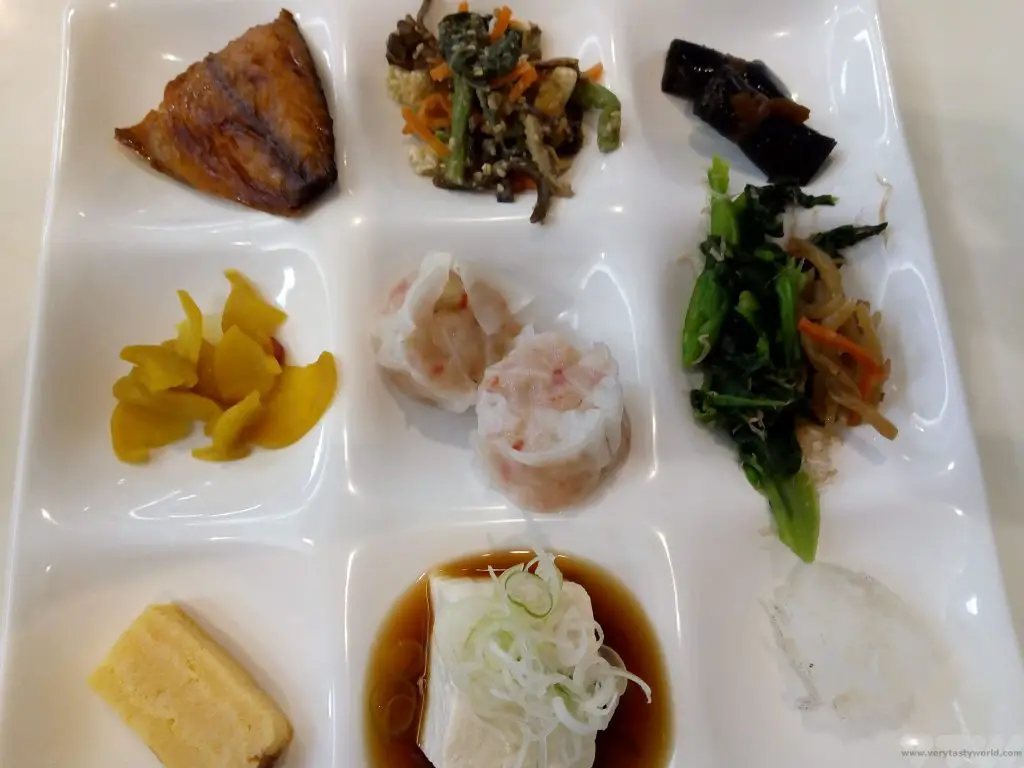
These are accompanied with a bowl of rice, into which you could crack a raw egg mixed with shoyu (soy sauce) – the egg sort of cooks in the heat of the rice – or that famous smelly fermented soybean concoction, natto, maybe with some sliced negi (similar to spring onion). Just grab a slice of nori (dried seaweed), place it over the rice, then using a pincer movement with your chopsticks grab a portion of rice with the nori. Scrumptious. (It’s worth noting that if you are at a breakfast buffet in Japan the eggs on offer may well be raw – be careful when cracking them.)
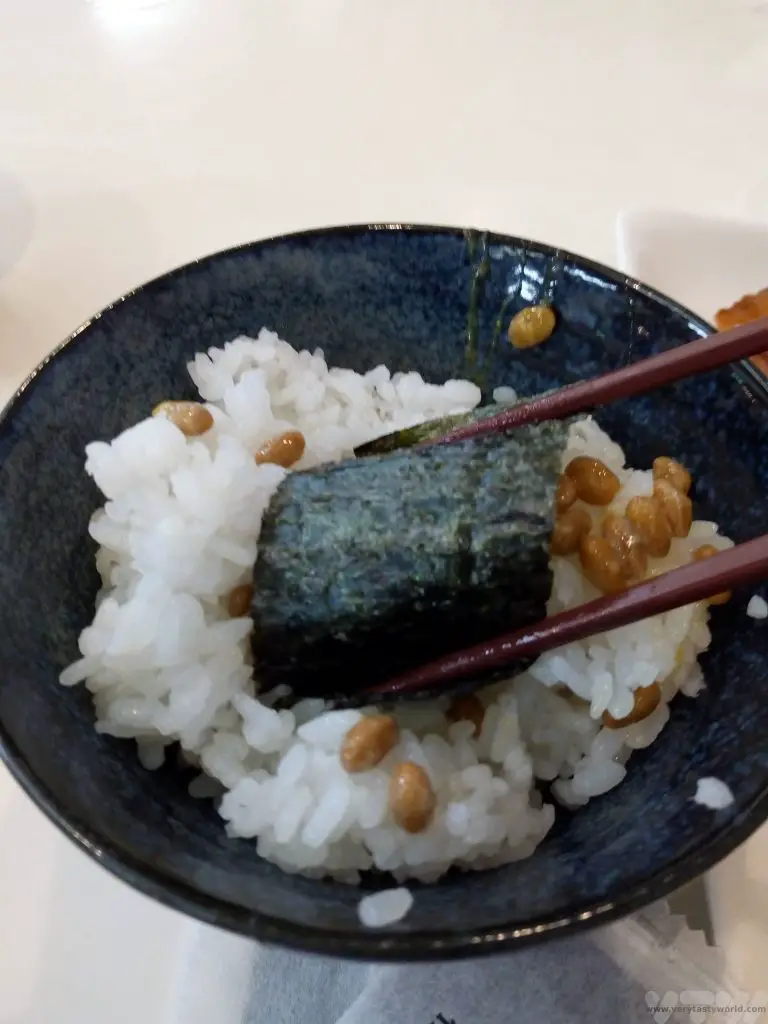
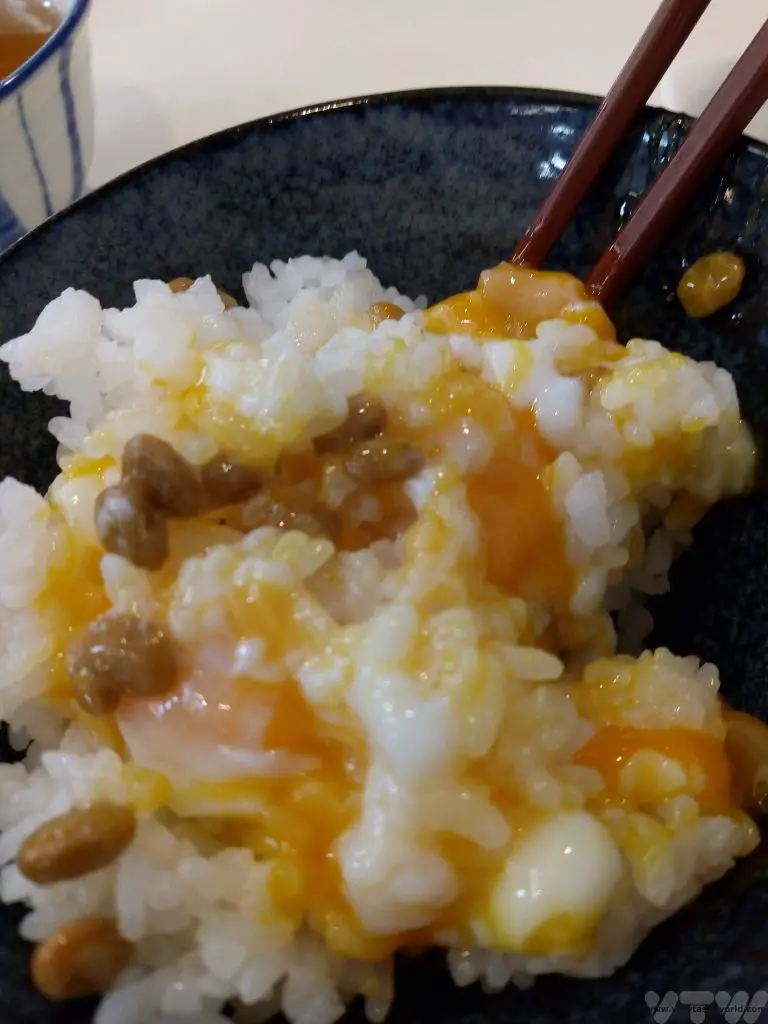
World’s Best Breakfasts – Back At Home
And, of course, whenever we are staying away from home in the UK, we’ll always have an honest-to-goodness fry-up. Sausage, bacon, egg (usually fried, poached or scrambled), black pudding, mushroom, tomato, beans and sometime a hash brown are the usual components.

We recently discovered that the best possible place for a full English breakfast that we’ve ever eaten is actually in our home town. While many top breakfast establishments boast locally sourced food (which is, of course, delicious), The Gourmet Food Kitchen in Fargo Village, Coventry go one step further and actually cure their own bacon and make their own sausages and black pudding. And that’s just the start: The hash brown (never the most fabulous component of breakfasts) is a home-made bubble and squeak, a glorious blend of fried potato and cabbage. The beans have never seen a tin – they are home-made baked beans in a rich tomato sauce. Chef Tony even makes his own rich, tangy and utterly delicious brown sauce to accompany the feast.
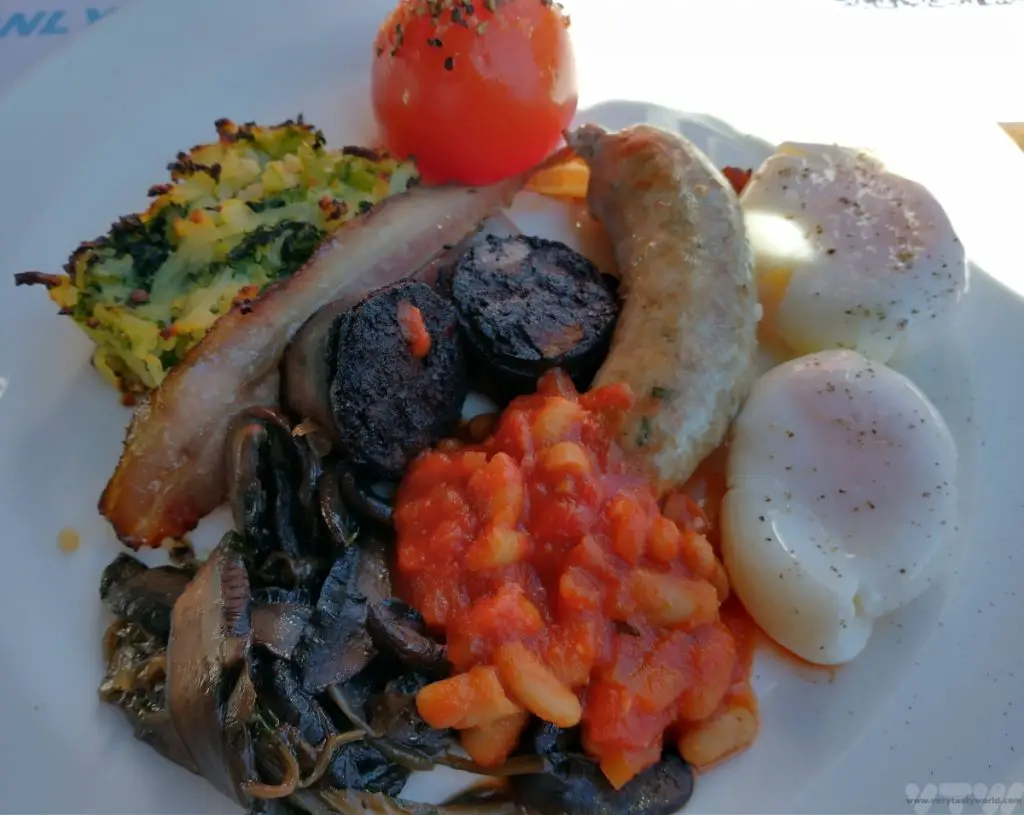
Related Posts You May Enjoy

Love at First Bite – Costa Rica Chocolate
We had always wondered what the point of mosquitoes actually was. As far as we could see all they do is bite people to suck their blood which causes much irritating itching and, worse, they spread horrible diseases. We might be particularly biased against the nasty little blighters as we seem to be strawberry flavoured to them and are guaranteed to attract any within our vicinity so that they can have a really good feast on us.
But it turns out that mosquitoes have a hugely important – and very beneficial – role in the ecosystem: they pollinate chocolate flowers. Yes, without mosquitoes the cacao trees of Costa Rica would not produce nearly enough fruit and hence there would be less chocolate in the world. And Costa Rica’s chocolate is fantastic quality.
Monteverde is one of Costa Rica’s most visited locations. The primary reason for visiting would be to experience the cloud forest nature reserve with its abundance of spectacular wildlife.
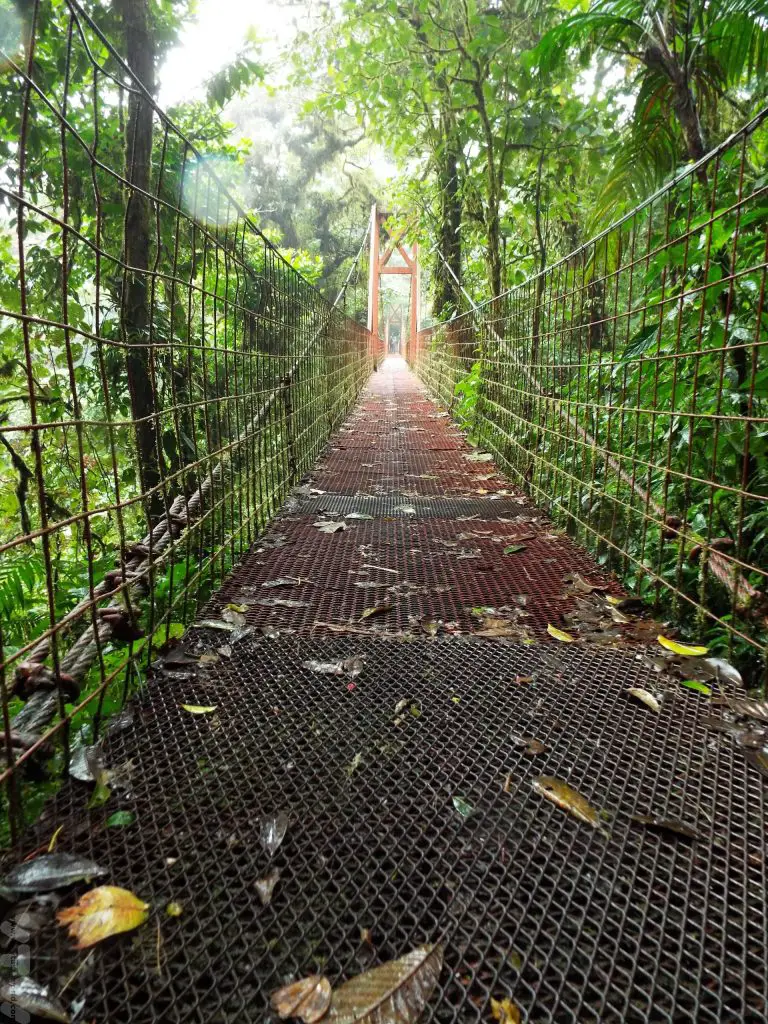
There are all sorts of other activities available, including adventure tours such as ziplining across spectacular scenery.
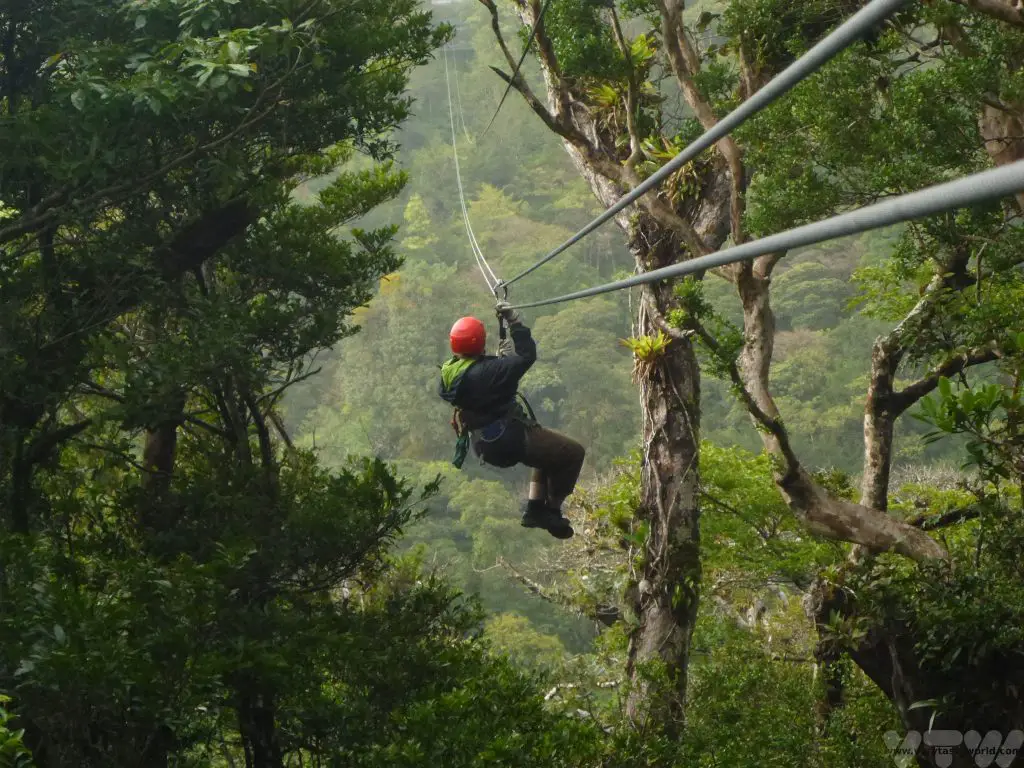
And, indeed, a number of foodie tours are also available. Don Juan’s plantation in Monteverde offers the opportunity to see chocolate being produced, as well as coffee and sugar cane.
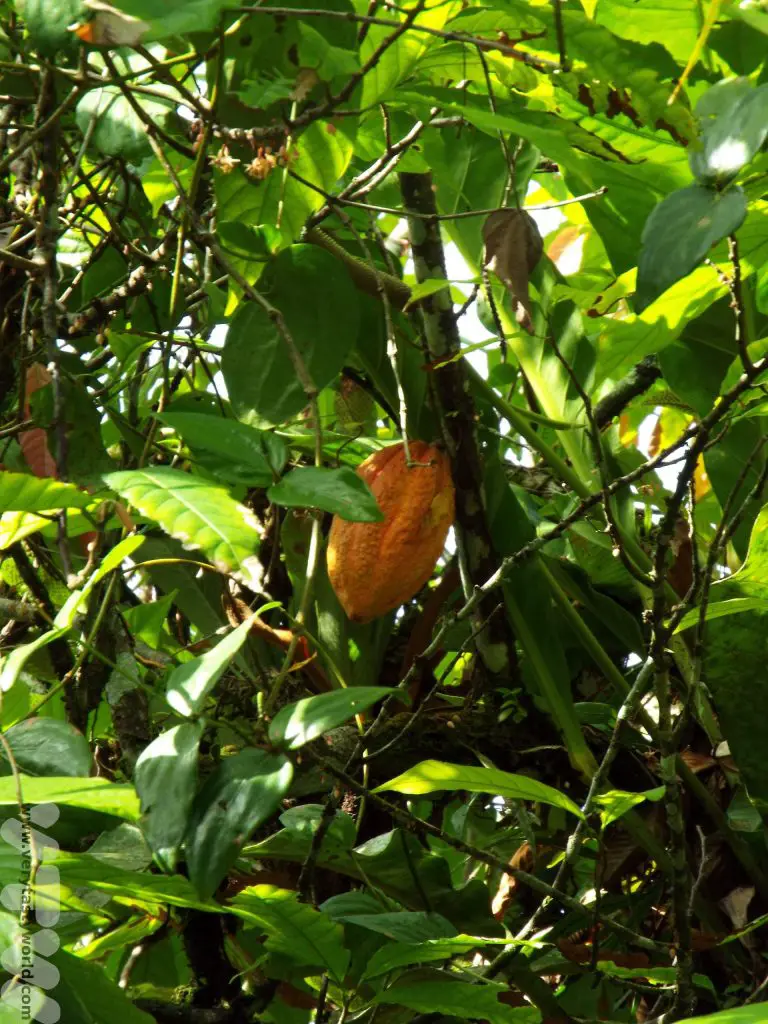
Cacao trees produce a fruit which has the shape of a rugby ball but is a little smaller. It has a tough orange leathery rind.
You cut it open to reveal 8-12 beans inside, all covered in what appears to be a slimy membrane that is white with a pale greenish tinge. It is these almond shaped beans inside that will become chocolate.
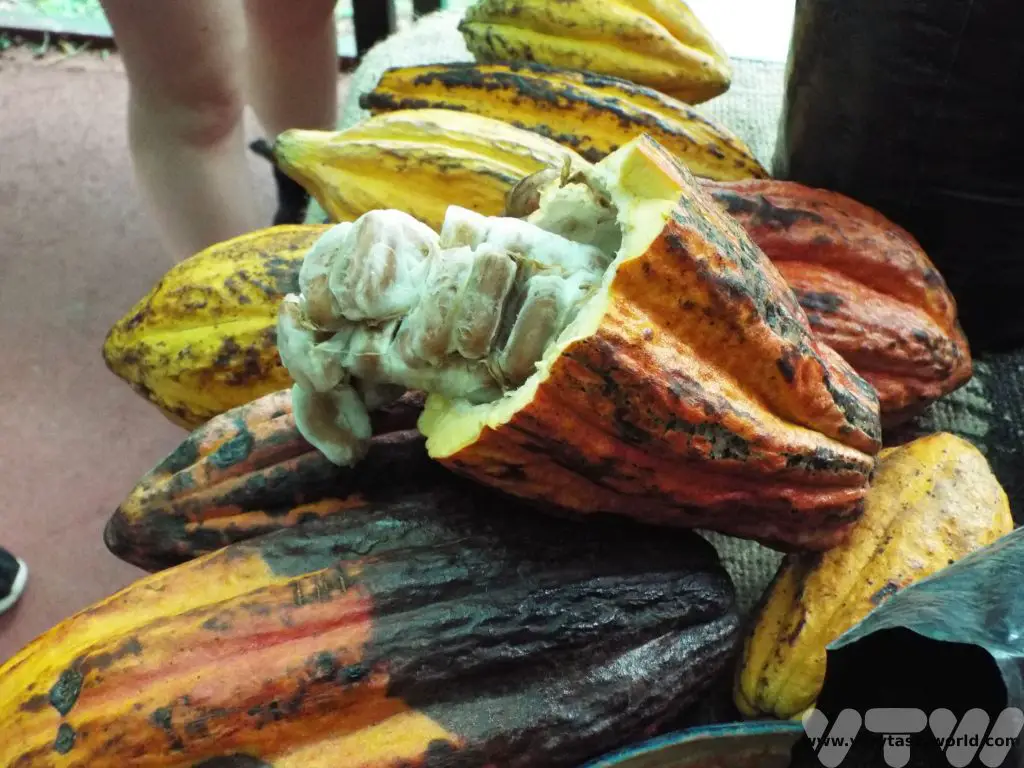
First of all, the beans are removed from the pod and undergo a fermentation process for five days. By day five you can really smell the alcohol. This process helps develop the chocolate flavour.
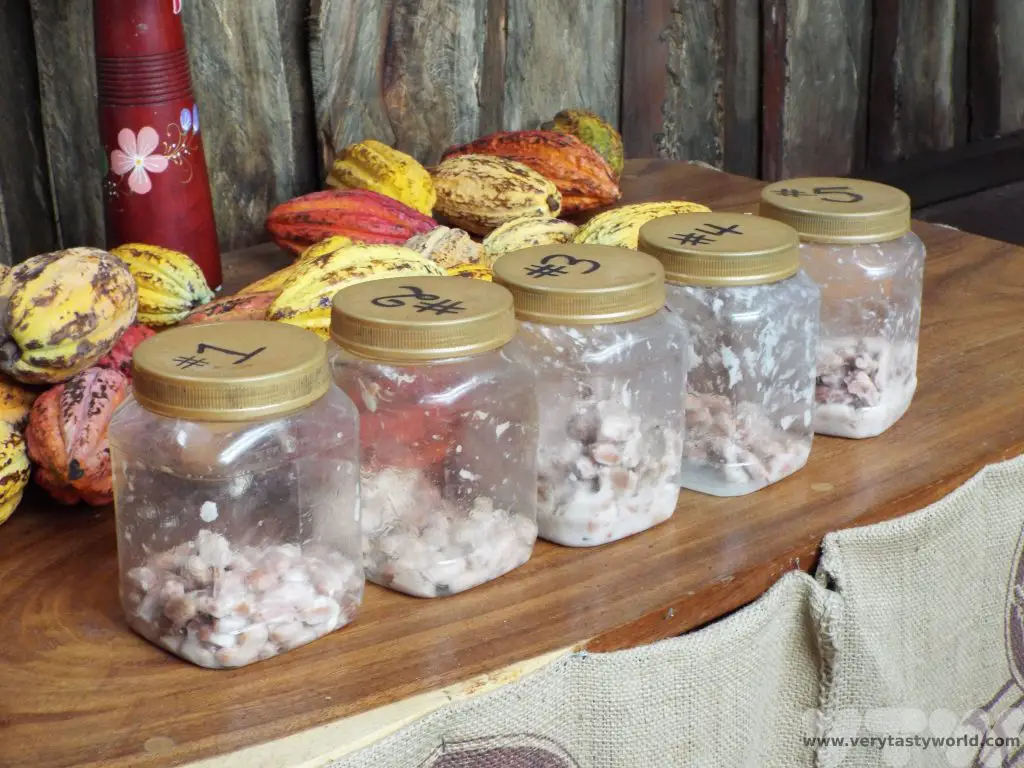
The beans are then dried naturally by spreading them out in the sun for a couple of weeks before they are roasted.
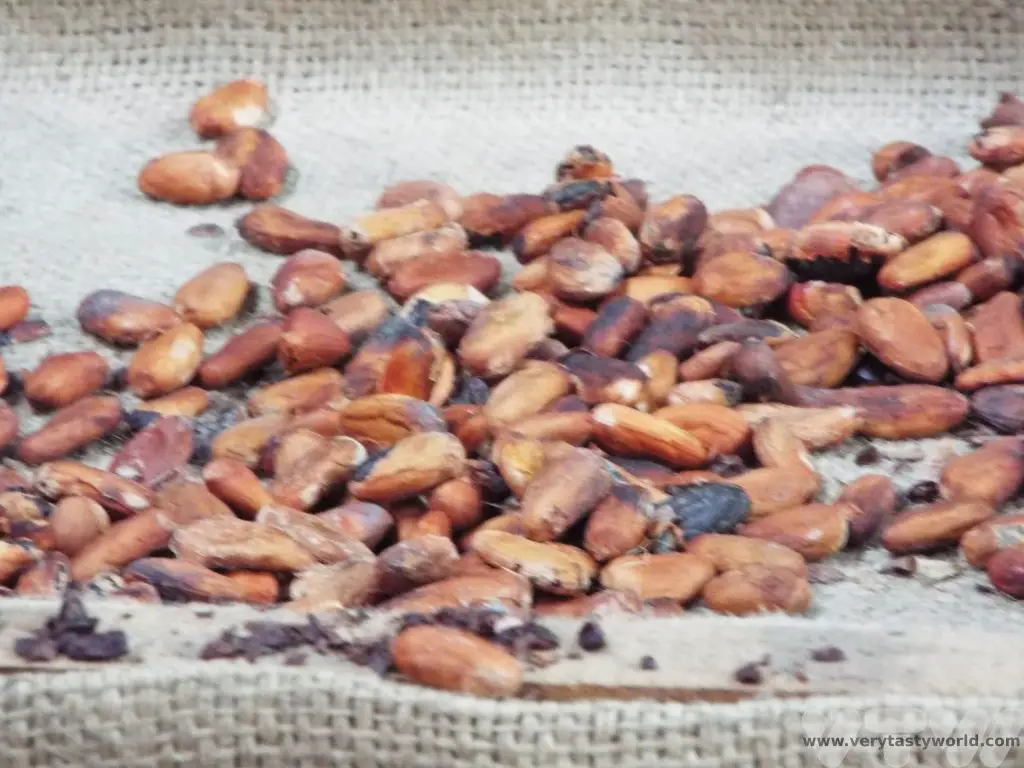
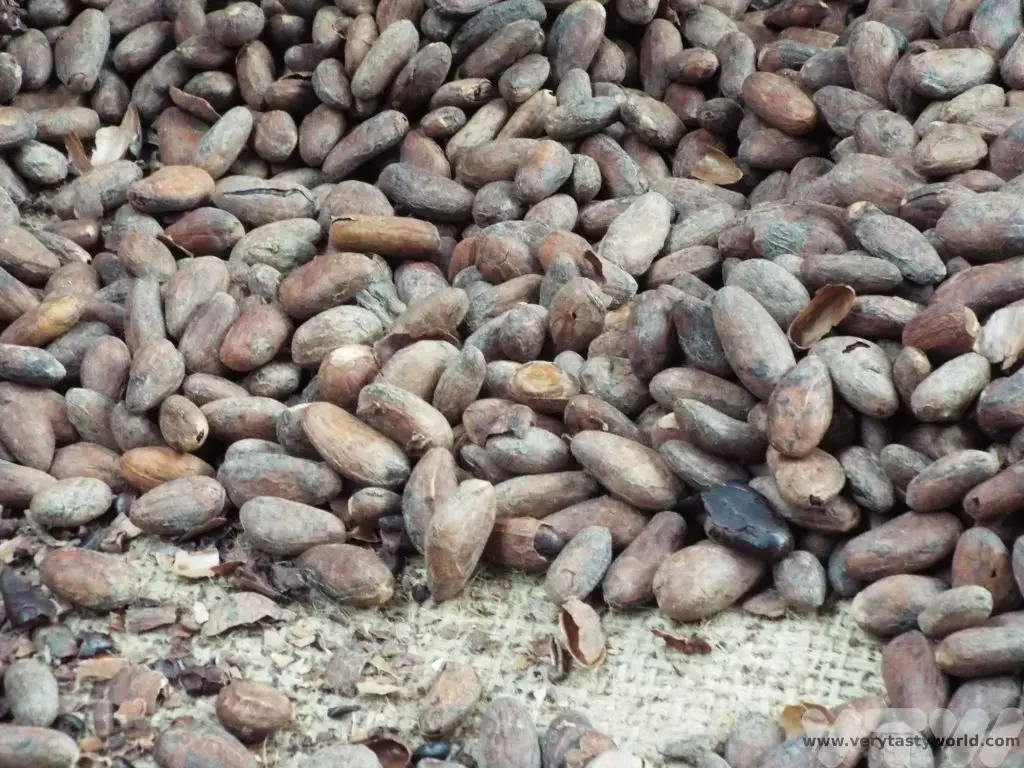
The roasting gives a bitter note to the complex flavour which feels counterintuitive because we all know chocolate to be sweet. But the sweetness is, of course, due to the vast quantities of sugar added to our favourite childhood confections later on in the process.
Winnowing separates the beans from their shells leaving the cocoa nib which forms the basis of the chocolate. You can eat the nibs directly – they have a slightly bitter flavour.
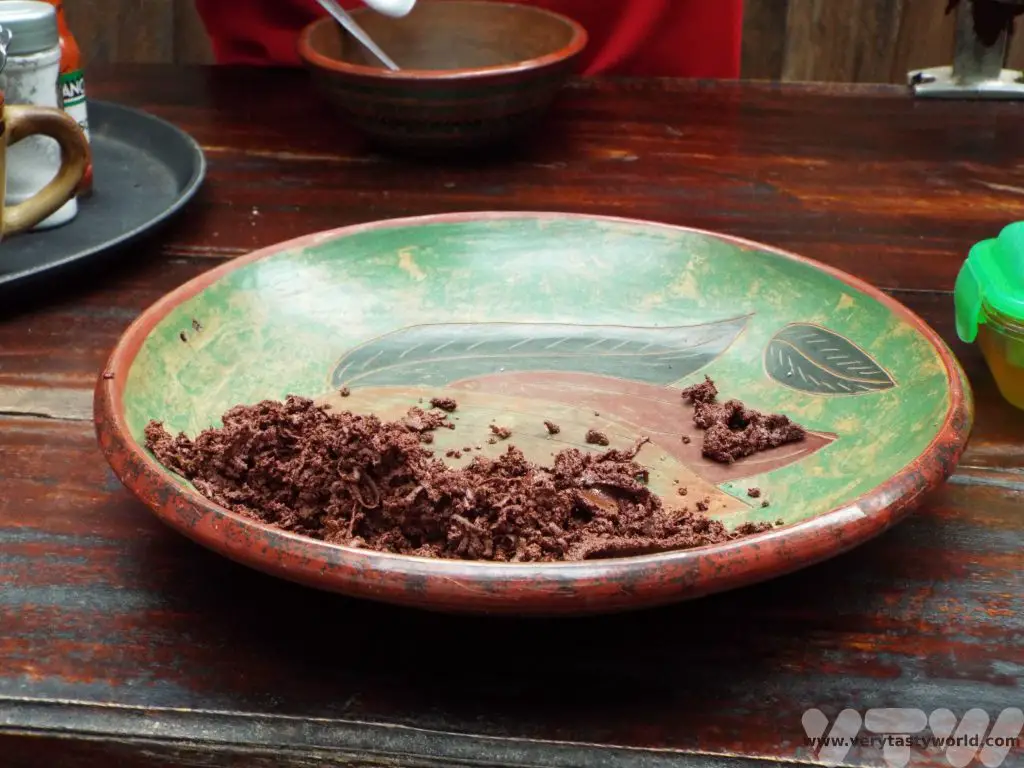
The nibs are then ground into a paste. The result of this is chocolate mass (also called chocolate liquor) – a combination of cocoa solids and fat in roughly equal proportions, the friction of the grinding process brings out the cocoa butter. The cocoa mass can be processed further to make chocolate or squeezed out in a press to separate the two elements – powder and cocoa butter. In combination, the cocoa mass is what gives chocolate its special qualities – the flavour and aroma from the hundreds of chemical compounds and the amazing meltiness. Cocoa butter doesn’t impart flavour but it has a melting point that is at body temperature which means that chocolate remains solid at room temperature but starts melting in the most gloriously decadent way as soon as you put it in your mouth.
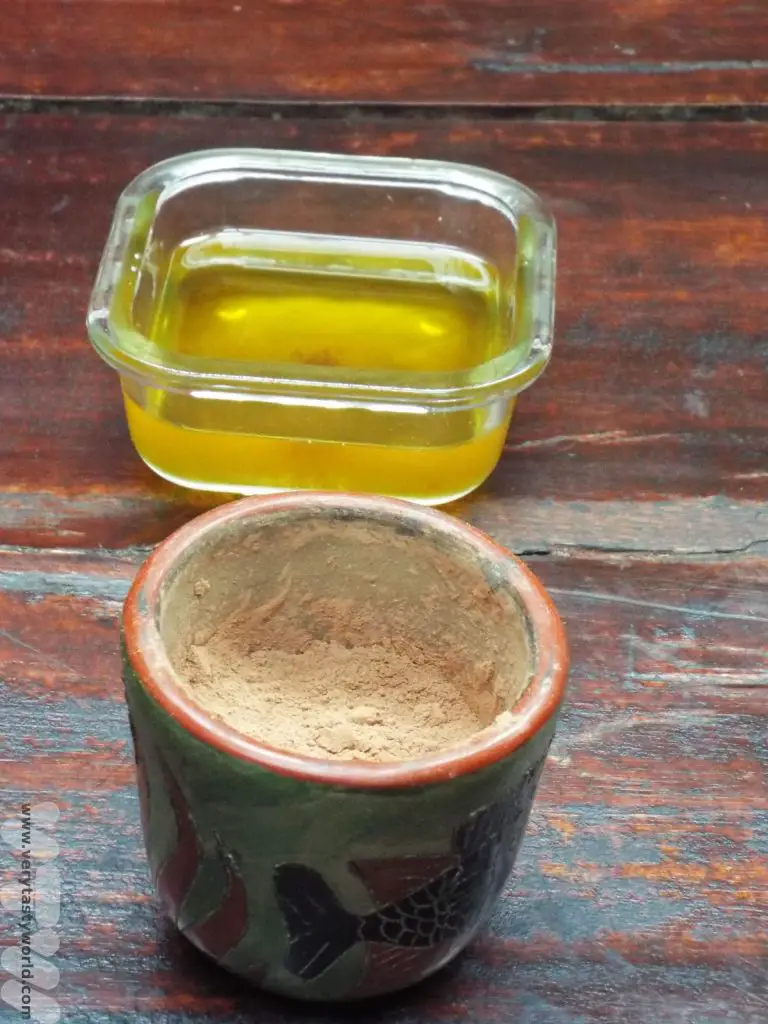
Of course there are lots of variations on the next stage of the processing. The nibs continue to be ground and then other ingredients can be added to produce chocolate. Of course, we are all familiar with the different types of chocolate and very likely have our childhood favourites.
Dark chocolate is made from sugar, cocoa butter, cocoa mass.
Milk chocolate is made from sugar, cocoa butter, cocoa mass, milk or milk powder.
White chocolate is made from sugar, cocoa butter, milk or milk powder. Curiously, there is no cocoa mass in white chocolate.
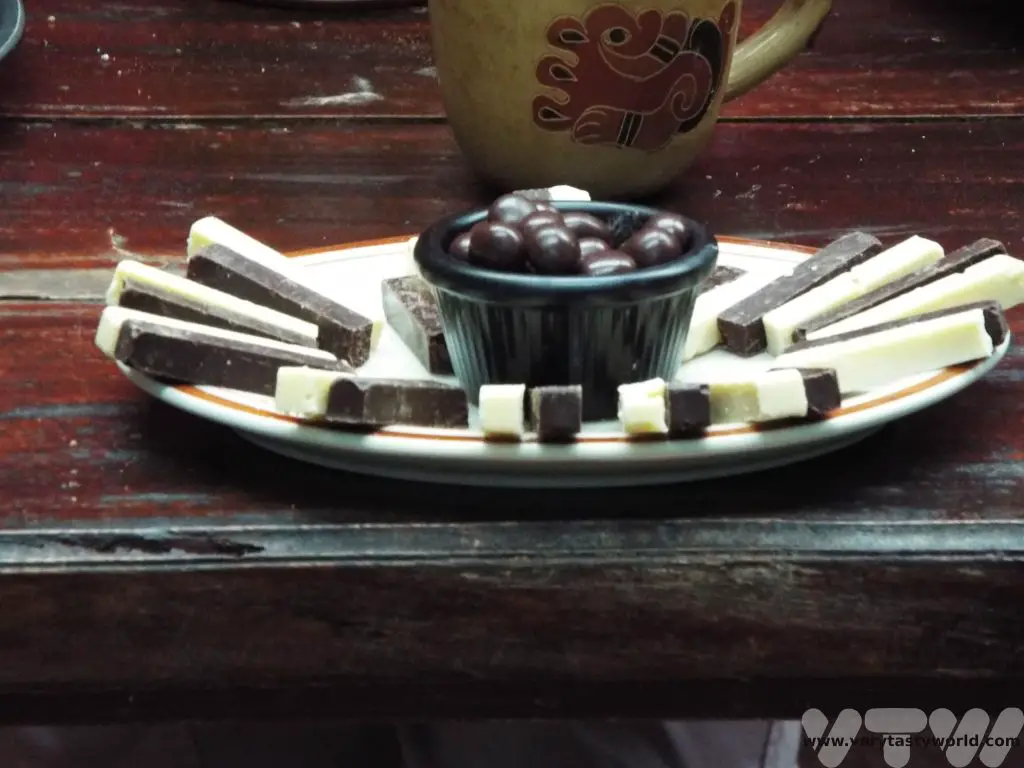
There is a further process to making chocolate and that is tempering, which creates uniform crystals of the cocoa butter and makes the texture of the chocolate smoother and less prone to cracking. Tempering involves heating the chocolate to about 50⁰C in order to melt all the types of crystals that form, then agitate at 27⁰C then heat slightly to 31⁰C. This gives the chocolate its silky shininess.
We tried some of the products on offer. These treats were direct from the plantation and had had minimal processing.
Pure cocoa butter is all about the texture – soft and luscious, it is completely different to the white chocolate bars you grew up with as a kid.
And, of course, we couldn’t refuse a cup hot of chocolate made direct from grated cocoa mass. It is a rich, smooth, warming, slightly bitter drink – a very adult hot chocolate.
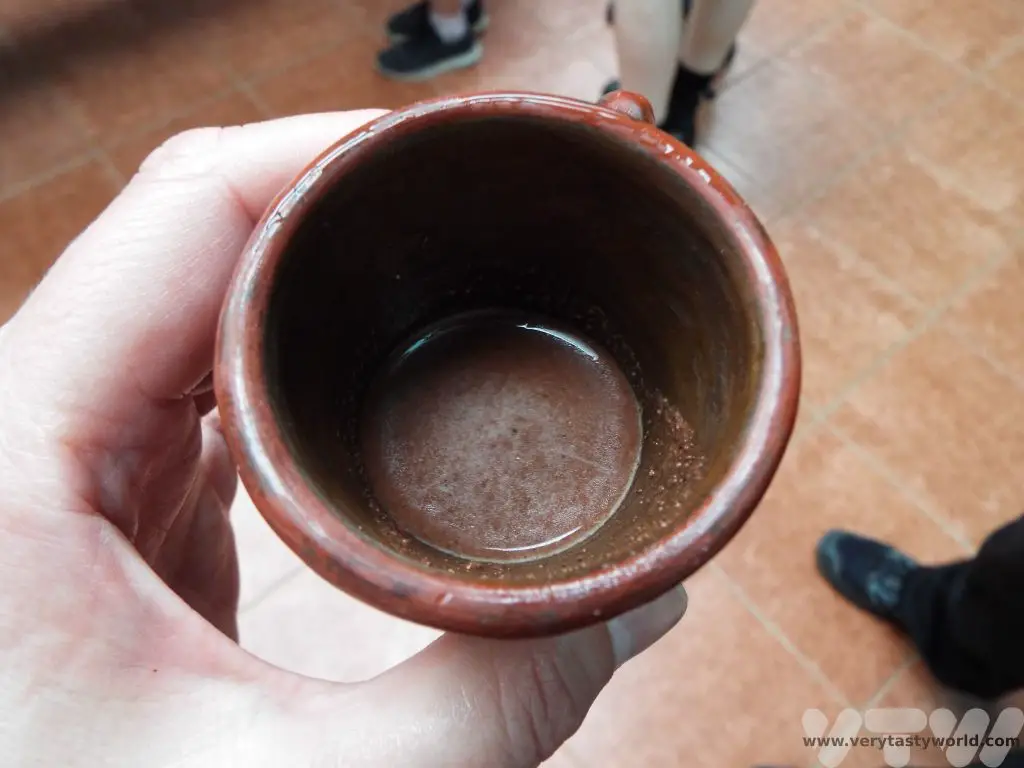

- Best Time To Visit Machu Picchu 2024 Update
- A 2 Week Patagonia Itinerary
- Day of the Dead in Campeche
- A Galapagos Land Based Itinerary
- RECIPE: How to Make Costa Rica’s Gallo Pinto
- A Tasty Puebla Food Tour
- Costa Rica Wildlife Sanctuary – Caño Negro
- Visit Torres del Paine National Park in Patagonia
- Atacama Desert Itinerary
Turtles Nesting in Tortuguero, Costa Rica
Warning for no photographs at all. We grew up using film cameras. The ones where you have a maximum of 24 or 36 shots on each roll of film and, once used, you had to wait for weeks for the films to be developed at the laboratory and for the prints to be sent back home. You chose your shot carefully, you composed it, each and every picture was a precious thing. Digital photography is fantastic in so many ways – we would never have taken a picture of our meal using celluloid! – but with such easy access to cameras and phones and virtually unlimited shot potential sometimes it feels as though we are so busy capturing pictures for posterity that we forget to experience the moment.
Tortuguero on the Eastern coast of Costa Rica isn’t really how you’d expect the Caribbean to be. Even though you can get a lovely drink of coconut water directly from the pod, the coastline is wild, the sea rough and you probably wouldn’t sunbathe on the beach. You definitely would not want to go swimming in the sea for fear getting eaten by sharks. You also wouldn’t want to swim in the channel on the other side of the peninsula for fear of getting eaten by caiman. But it’s the most amazing place to view some of Costa Rica’s wildlife.
The weather is hot and humid. Really hot and very humid. The area experiences about 6000 mm of rainfall every year and when it rains, it rains. We recommend waterproof ponchos. There was no aircon in the lodge we were staying in, just an old-fashioned fan, which provided a minimal amount of respite. The waves pounding relentlessly on the beach provided an aural backdrop.
One of the main attractions are the turtles that come to the beach to nest. Each species has a different nesting season. We visited in late June, just before the season when the greenback turtles were expected to come ashore. Although our hotel wouldn’t offer a guide because they couldn’t guarantee a sighting, we found a local guide who was willing to take us out and gave us a discount on his usual price, although he emphasised that we might not get a viewing. We decided to take a chance. We knew we were very close to the nesting season and we were pretty sure that the greenbacks weren’t lurking a few km offshore checking their greenback calendars to wait for the 1st of July.
We met our guide at 9pm and were given a briefing. The tours are undertaken to ensure minimal disruption to the turtle. No white light was allowed on the beach at all, the guide had a red torch so that we could – just about – see our way in the dark. In fact, even the local houses that line the shore refrain from using white light in their dwellings so as not to discourage the turtles from coming ashore. A small group of us walked in single file along a stretch of beach. It was really hot and very humid, even at that time of night. Our guide was looking for ‘tramlines’ going up the beach, a sign that a female turtle had come ashore. These appear to be parallel lines when you view them at a distance in the dark but, on closer inspection, the tramlines are actually distinct flipper tracks.
Other groups were scanning different sections of the beach and the guides kept in touch with each other via mobile phone. After walking 1 km to the village and a further 2 km along the beach we learned that a female had come ashore just 100 m away from our hotel. We had to dash back. Did we mention how hot and humid it was? As it turned out, we could have simply sat in the bar drinking cocktails then sauntered onto the beach. Instead, it was a hot, sweaty trot. We earned our turtle.
By the time we had arrived the greenback had traversed the width of the beach from the ocean shore to a location above the high tide mark, had dug a hole and was starting to lay her eggs. Cameras, phones and even torches are – rightly – banned on the beach. There were a couple of other groups who wanted to view the turtle. The aim was to ensure that everybody got a view without disturbing her. She was facing away from the shoreline and had her back to the tourists. Groups of ten people, five kneeling, five standing behind them were allowed to view the turtle for a couple of minutes at a time. Silence was mandatory. Then each group stepped back to let another group have a viewing. Throughout the process each group took a turn – step forward and view, step back and wait.
This greenback had been born on this beach. She was the 1% of all her siblings that had made it to adulthood, had travelled thousands of miles across the ocean and returned to the place of her birth. The egg laying was a real labour for the turtle. She laid around 100 eggs and after the final one, used her back flippers to push sand gently across to cover them all. Once the eggs were covered she then used her front flippers to brush across the sand, disguising the fact that a hole had even been present. These flippers were strong and no one knelt to watch that part of the process– they would have ended up with sand in their faces. Then the tourists melted away to let the turtle rest before she returned to the ocean.
In the spirit of no images, we woke up the next morning elated at our luck. The birds were singing, the Atlantic Ocean (heard in the background rumble) was crashing on the shore. This is how it sounded.

- Best Time To Visit Machu Picchu 2024 Update
- A 2 Week Patagonia Itinerary
- Day of the Dead in Campeche
- A Galapagos Land Based Itinerary
- RECIPE: How to Make Costa Rica’s Gallo Pinto
- A Tasty Puebla Food Tour
- Costa Rica Wildlife Sanctuary – Caño Negro
- Visit Torres del Paine National Park in Patagonia
- Atacama Desert Itinerary
